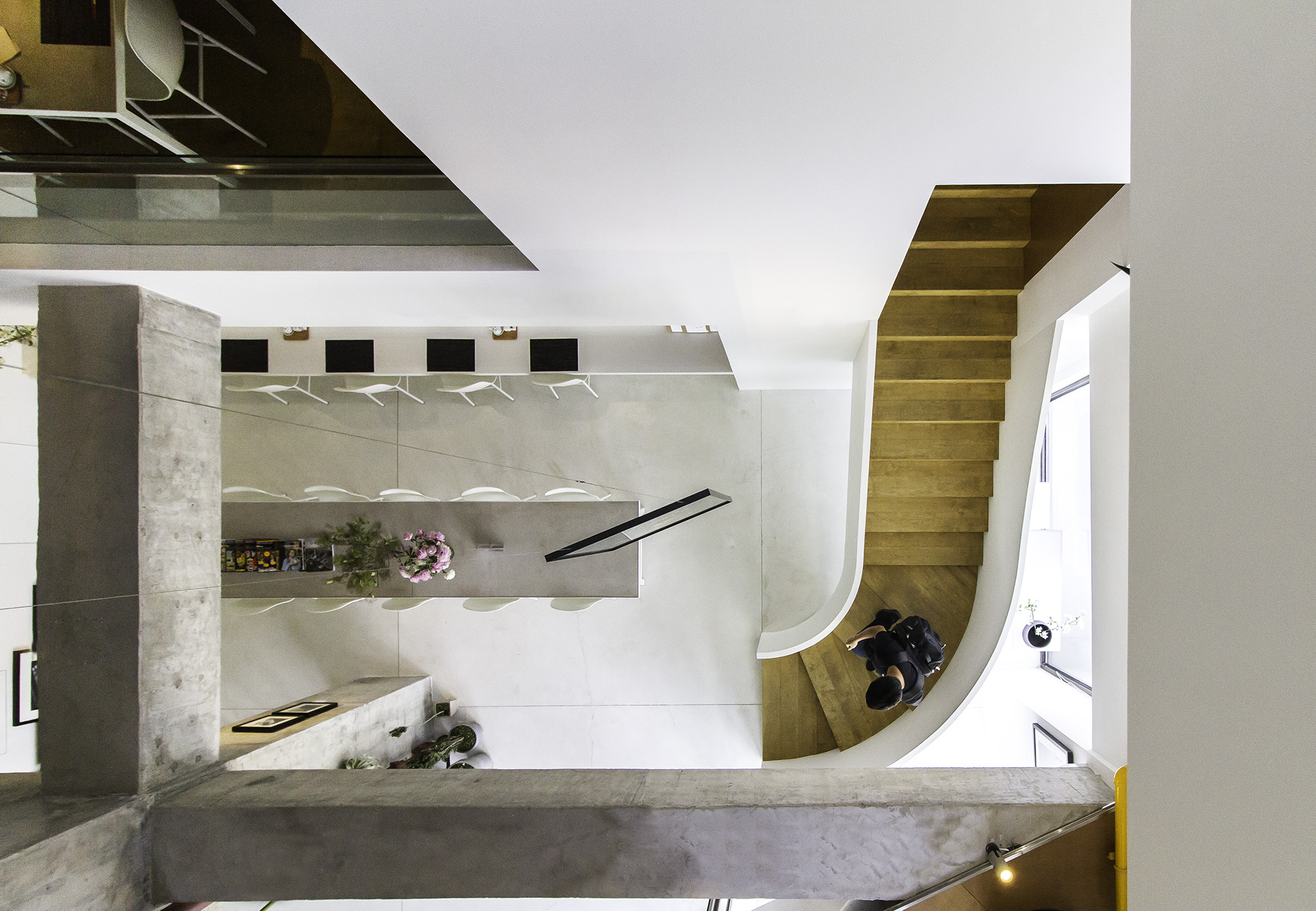Wangjing Japanese Lifestyle Centre
The Japanese lifestyle centre, situated in Wangjing, Beijing, is a refined space in which cultural elements of Japanese life are showcased, including a restaurant, tatami rooms, exhibition spaces, and meeting areas.
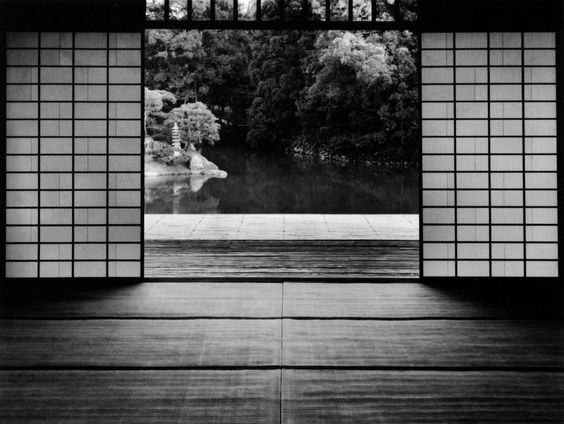
Concept image; Japanese pavilion paper screens
Japanese Culture
The client had the vision of not only creating a Japanese restaurant, but rather an entire lifestyle centre for Japanese culture.
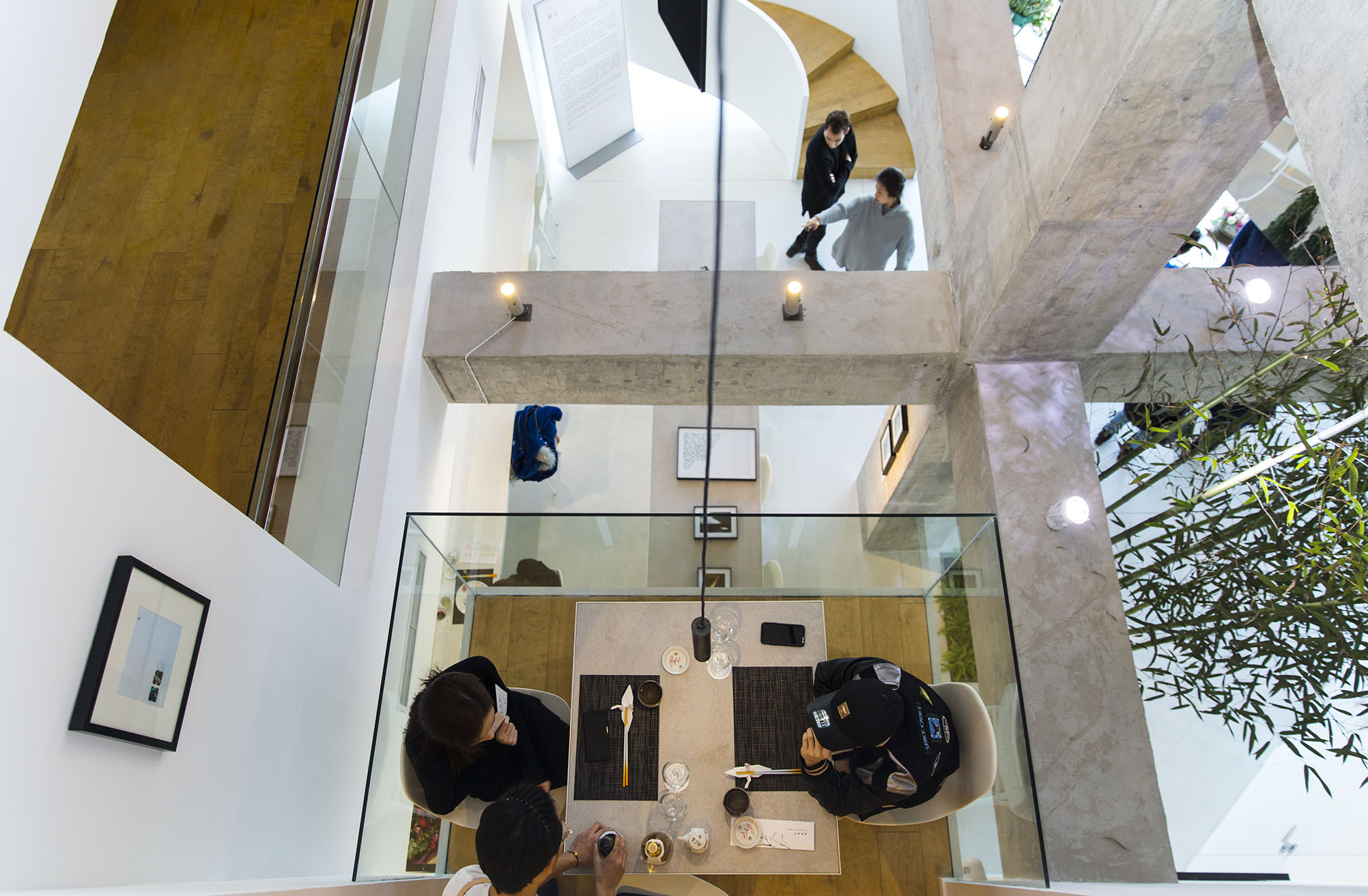
Existing
The future space consisted of three shop lots which would be merged into one space. We removed everything from the space leaving only the structure in place, and were left with a blank canvas.
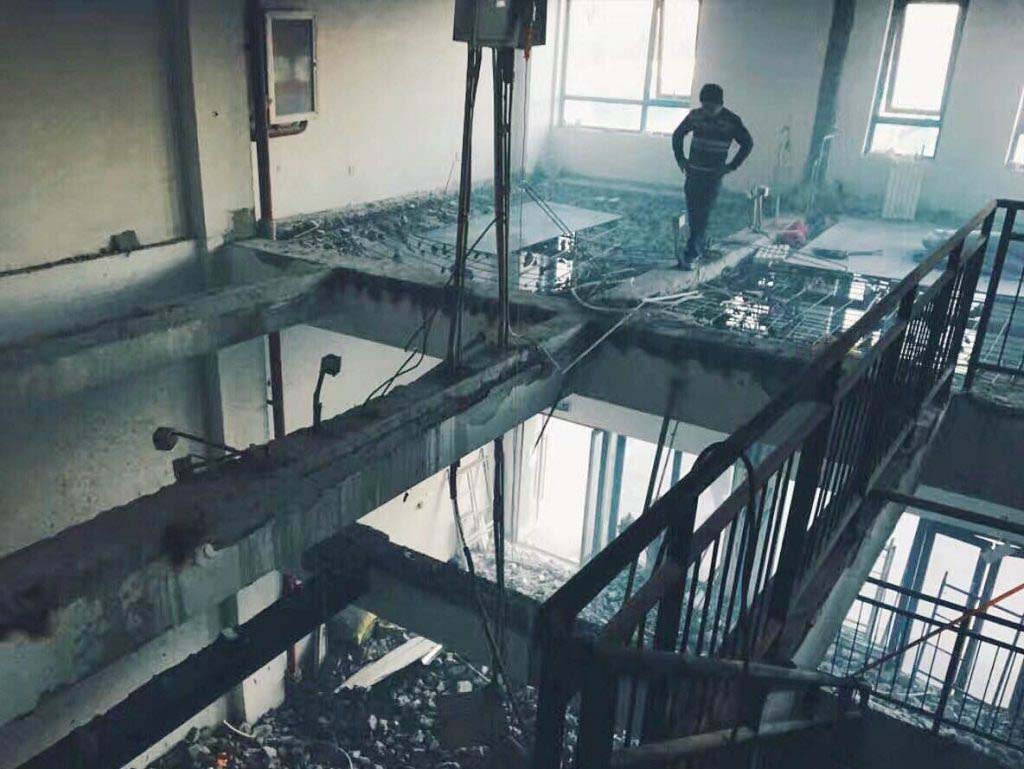
Existing space during demolition of floors and walls
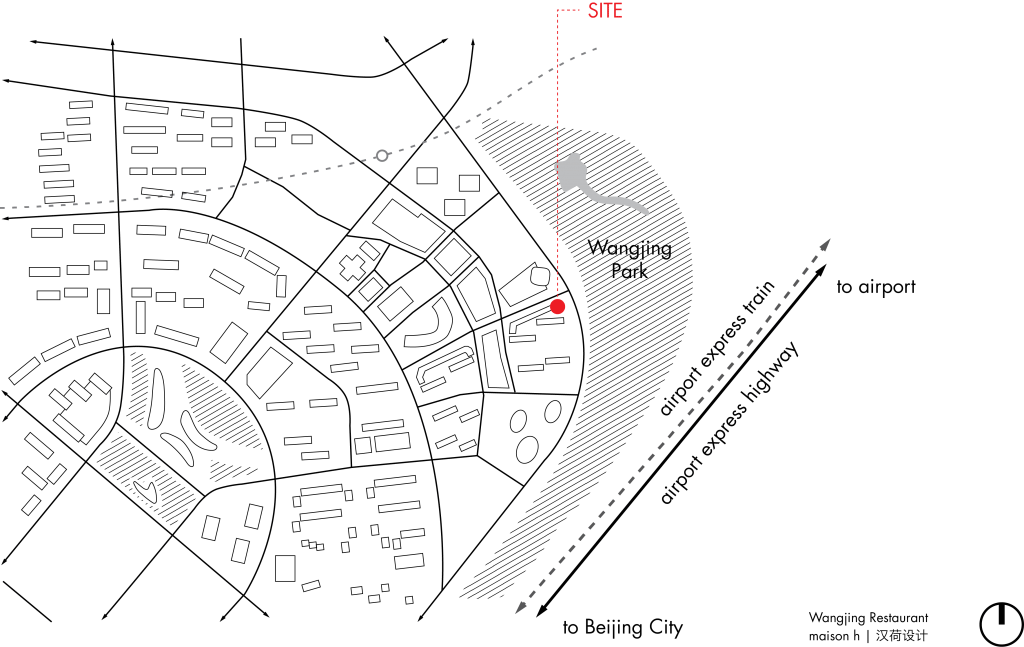
Wangjing locality plan
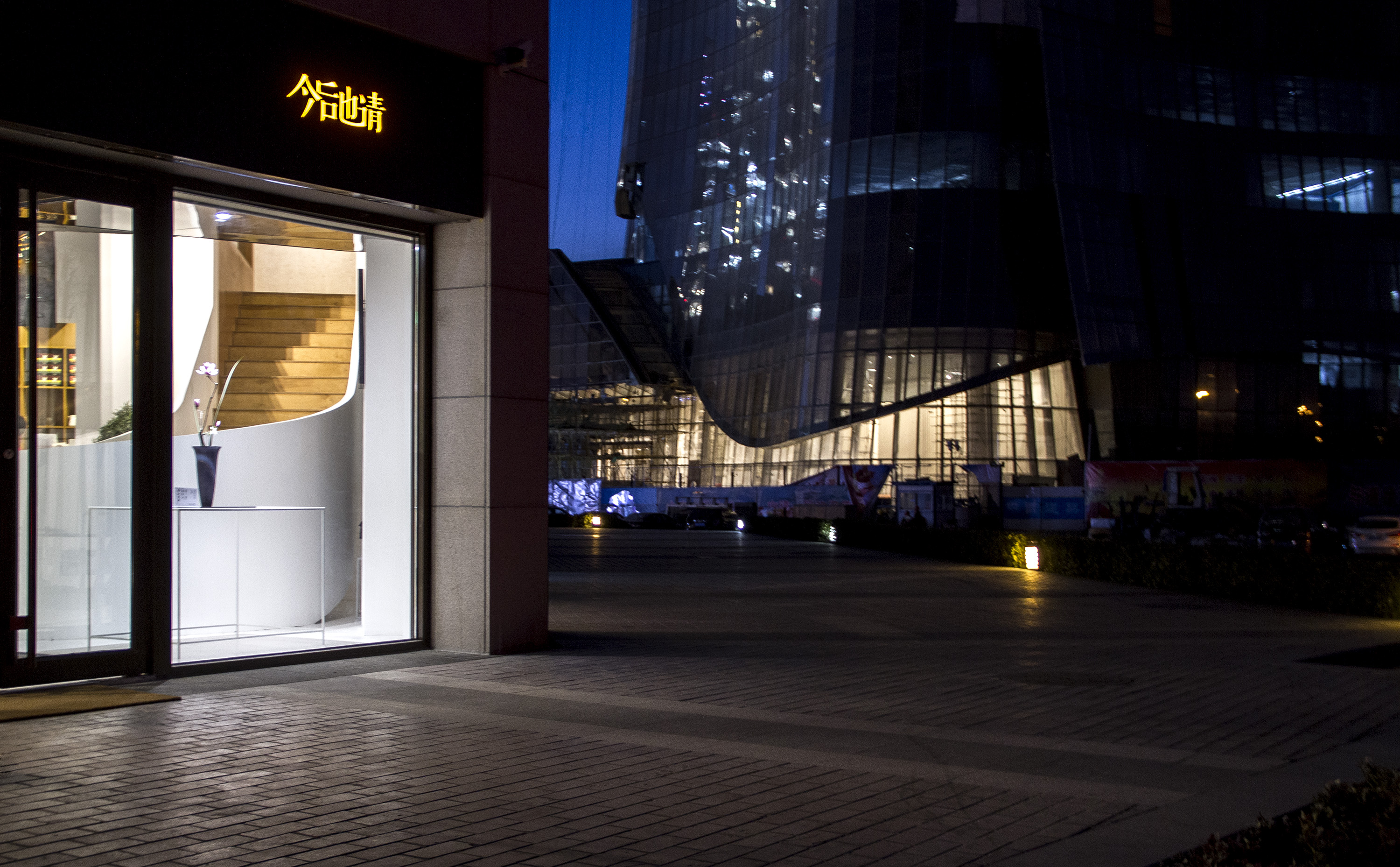
Client Collaboration
The process of getting involved with, and collaborating with our clients is incredibly important to the way we design and create.
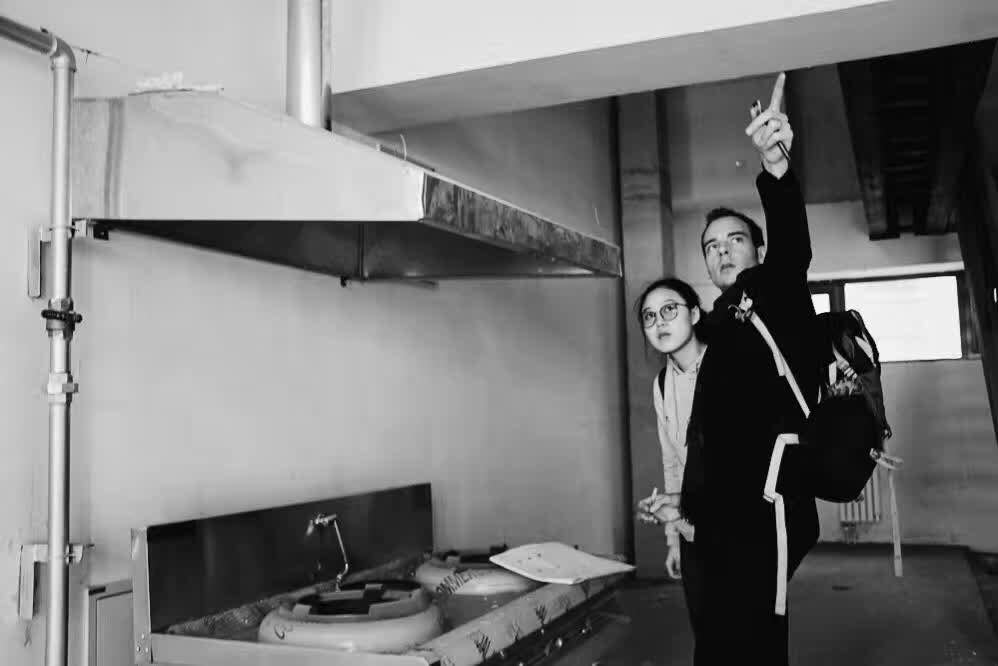
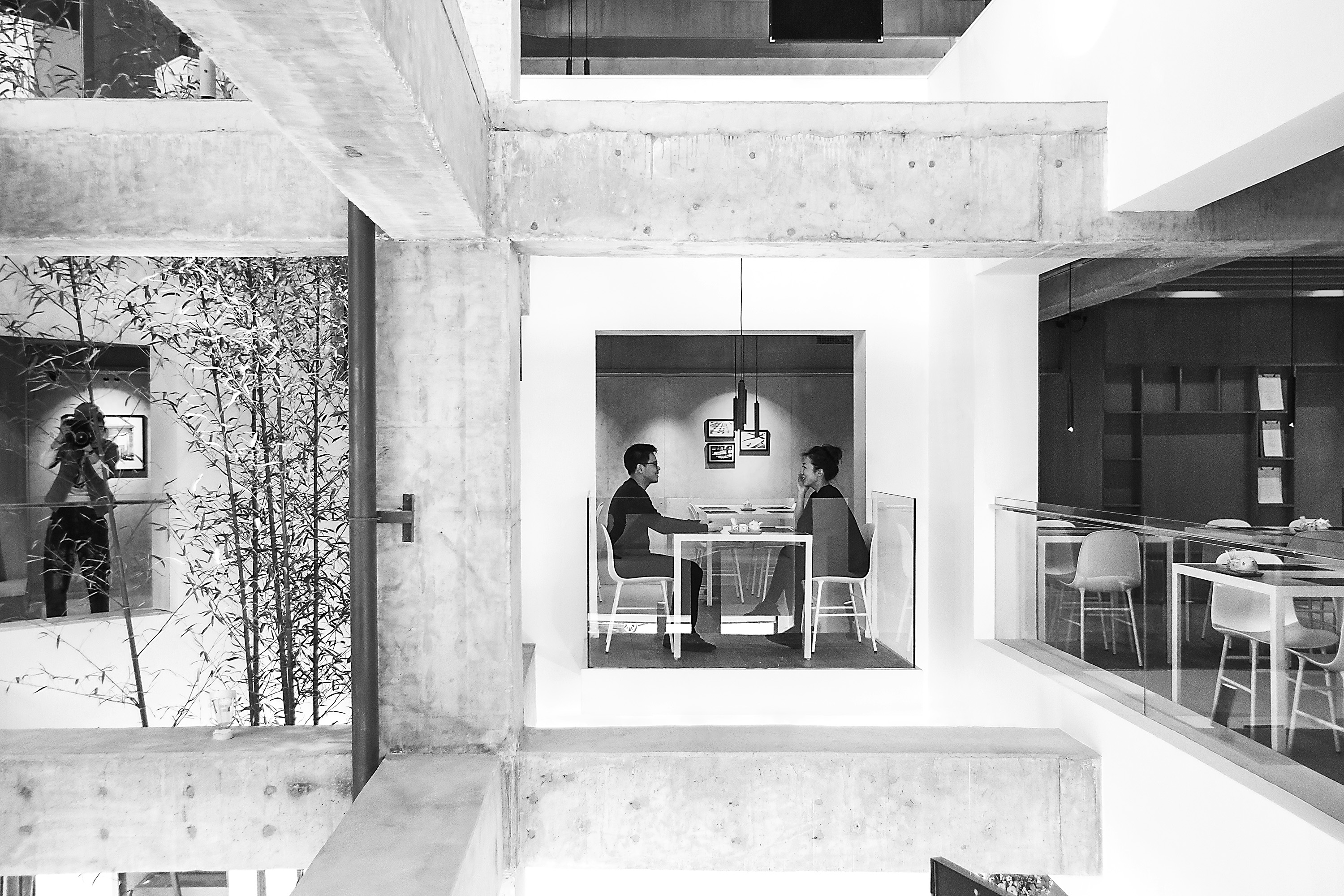
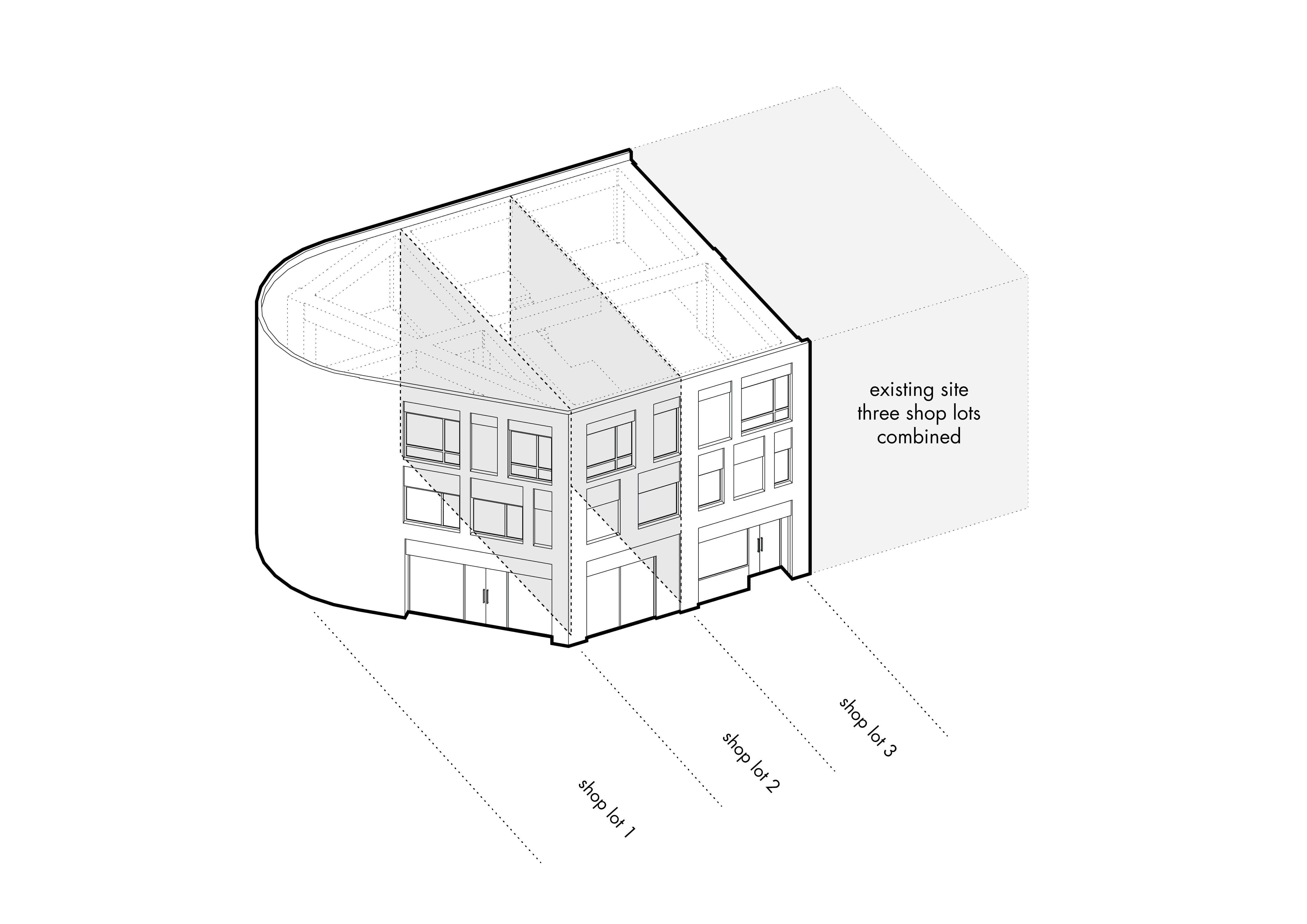
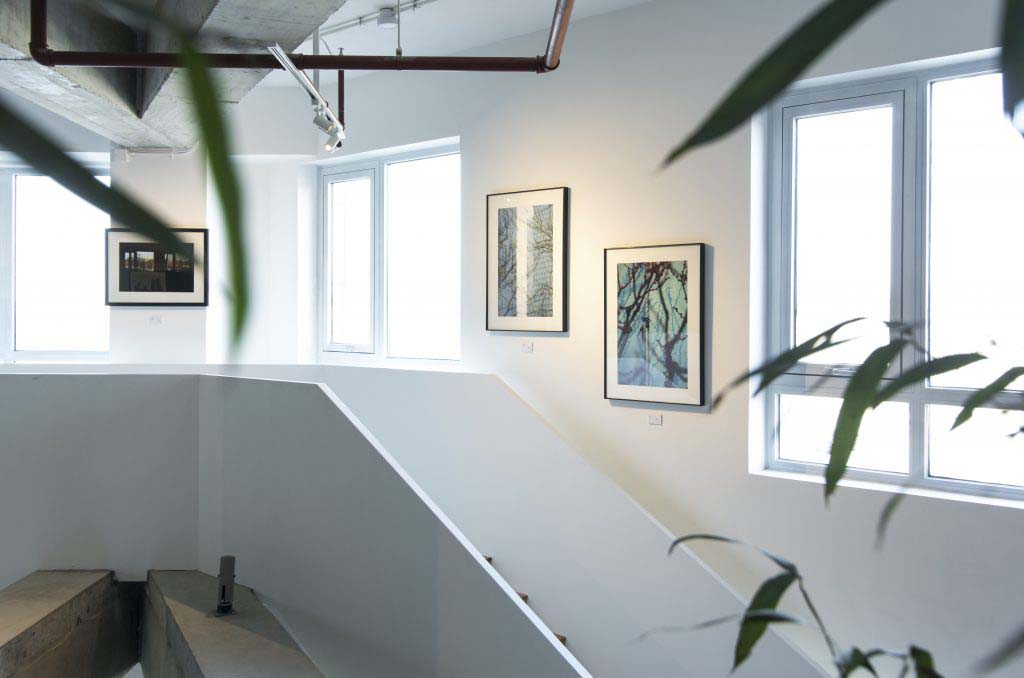
Stairs running through the volume
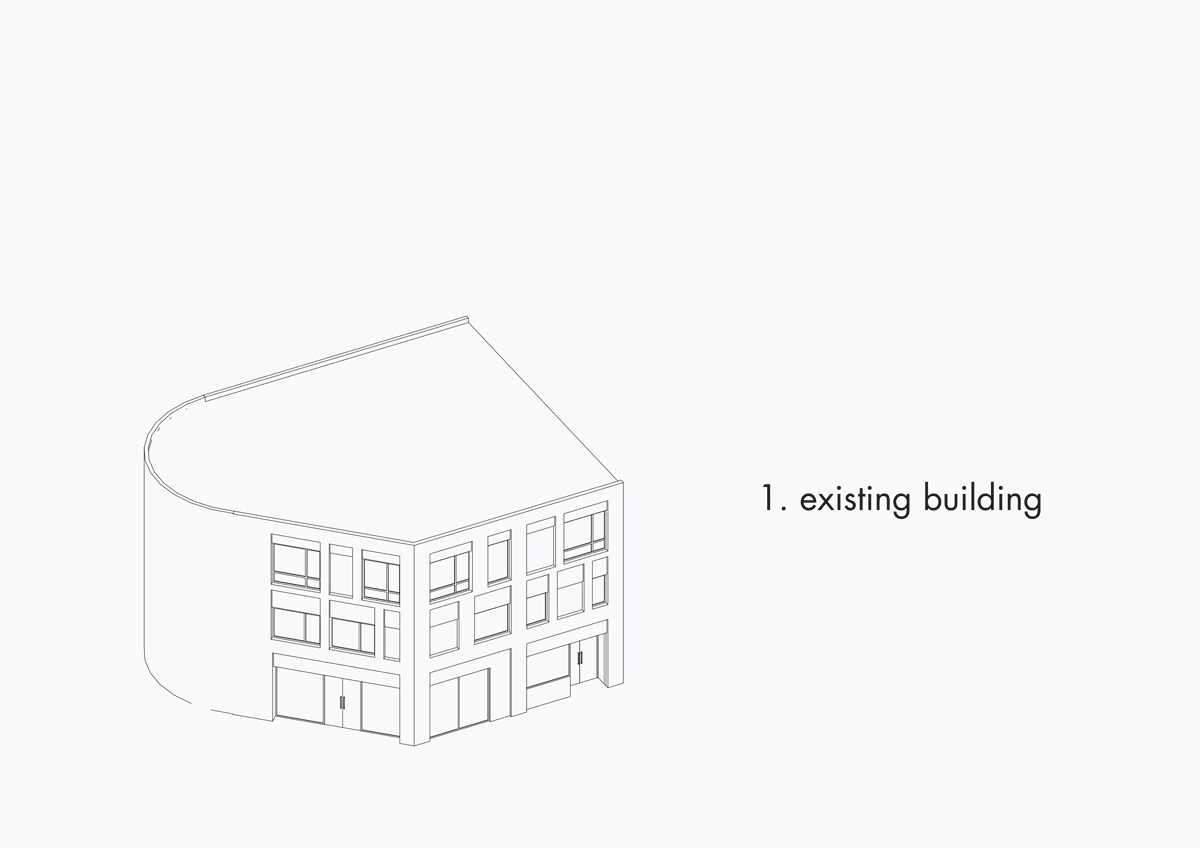
Bringing nature inside.
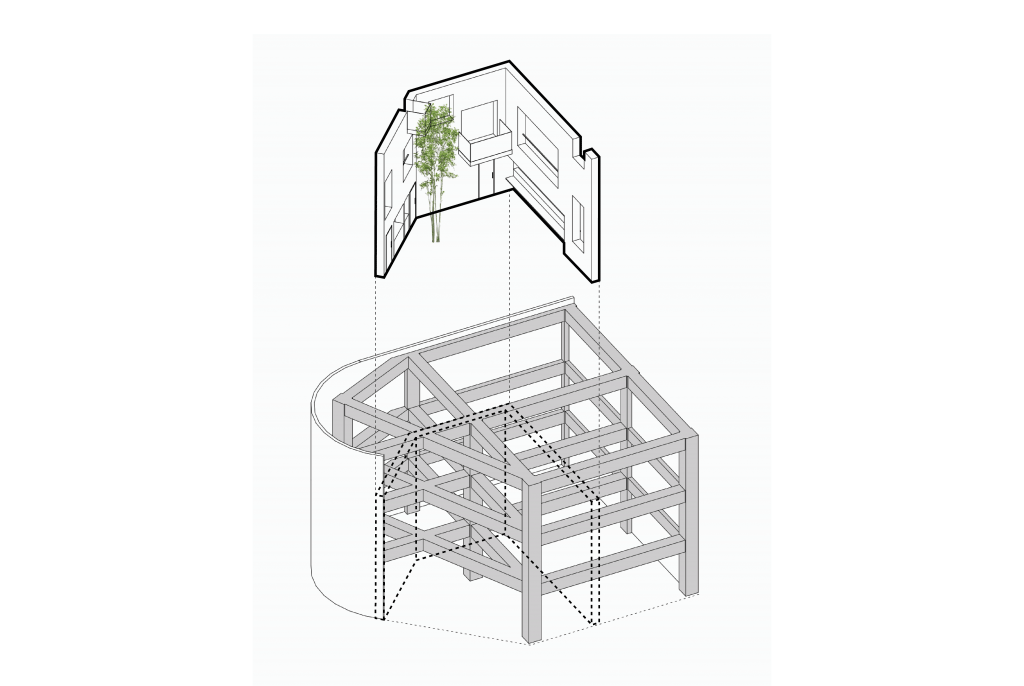
Facade installation diagram
Facade
In a restaurant the best seats are always near a window with a view, so we created a new ‘façade’ inside the space with the seating behind it, allowing everyone to be seated near a window and a view.
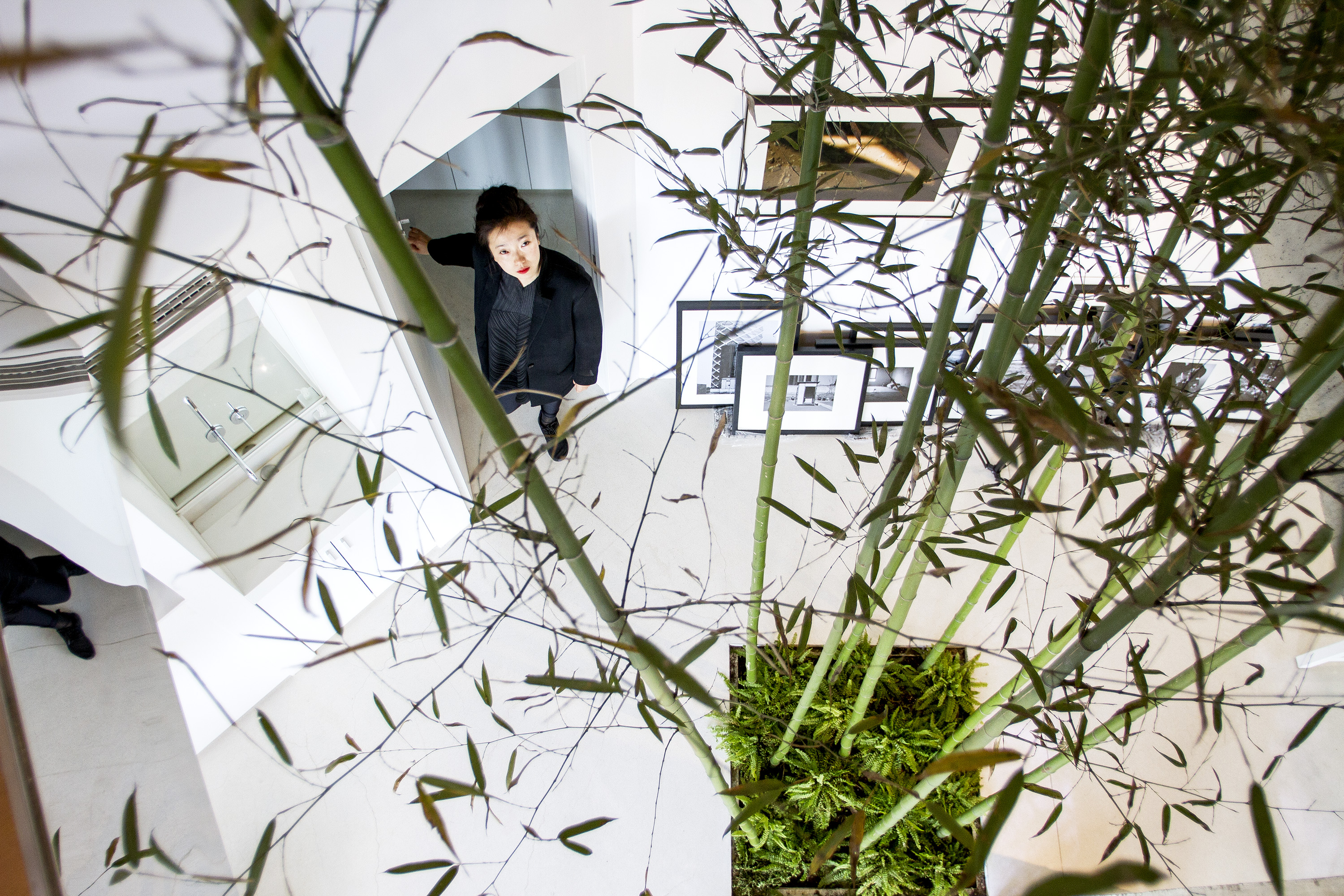
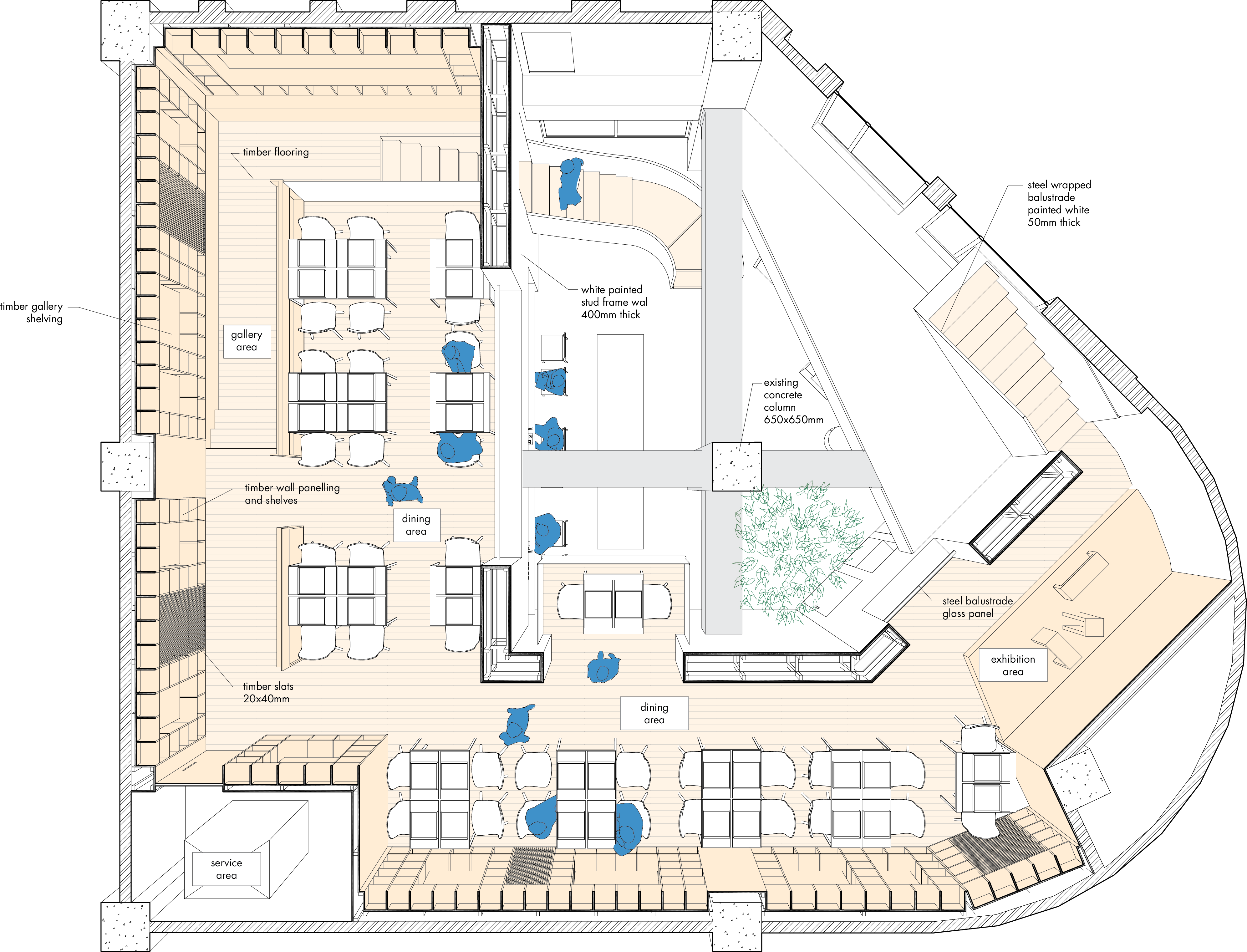
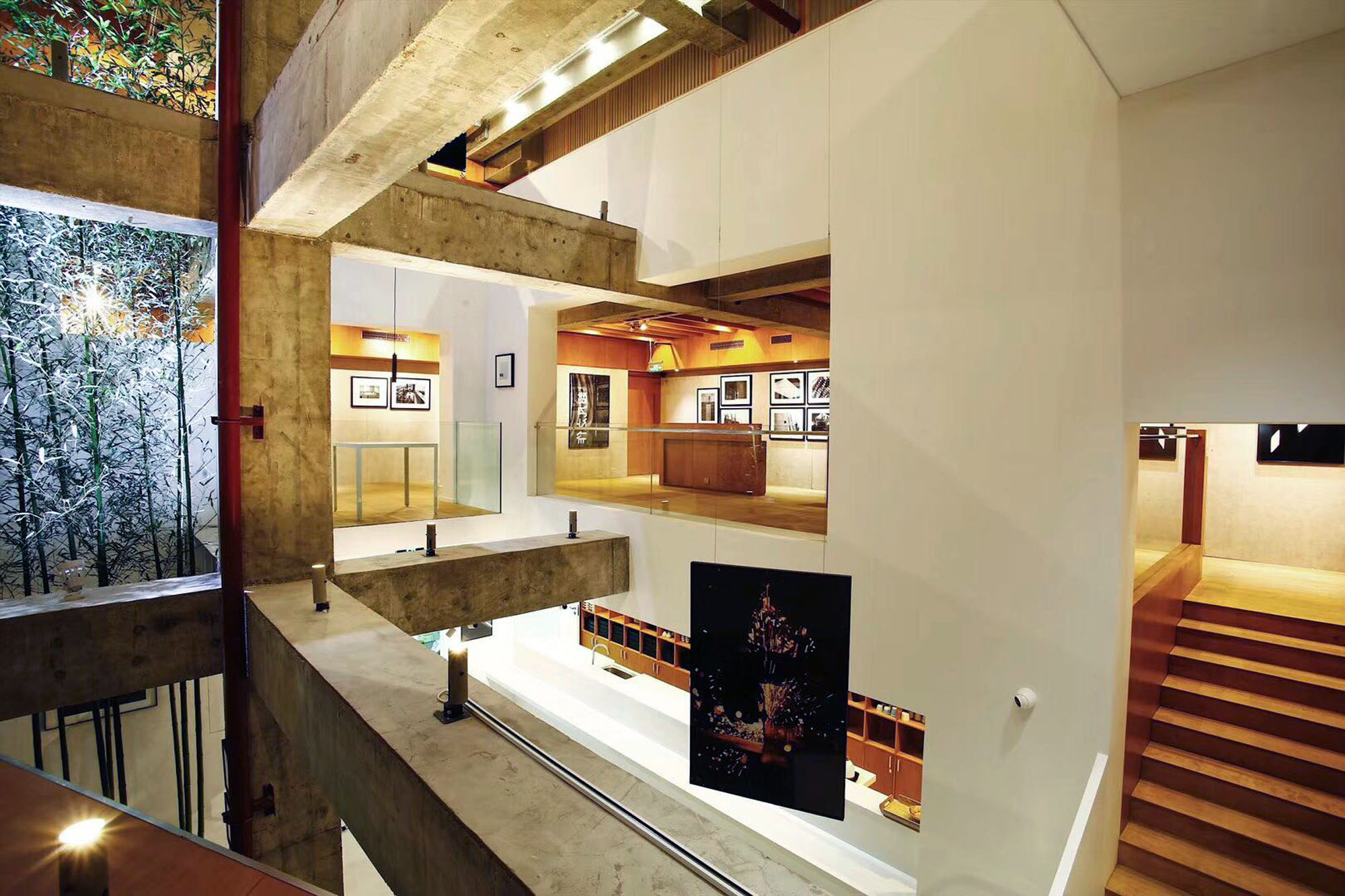
Inside/Outside
The atrium becomes the focal point for the lifestyle centre, with the back of house and dining areas surrounding and all connected by the airy and light-filled volume.
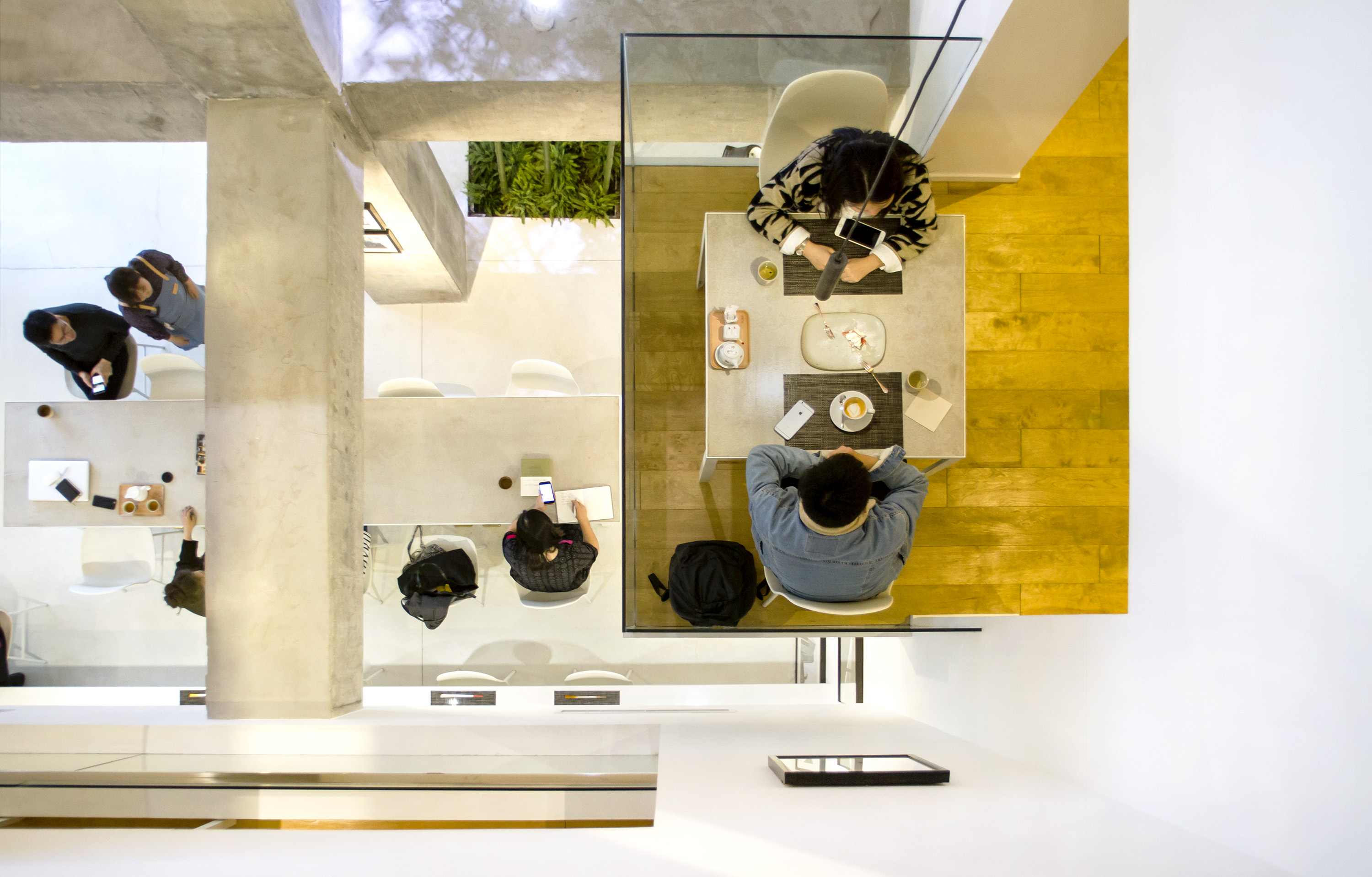

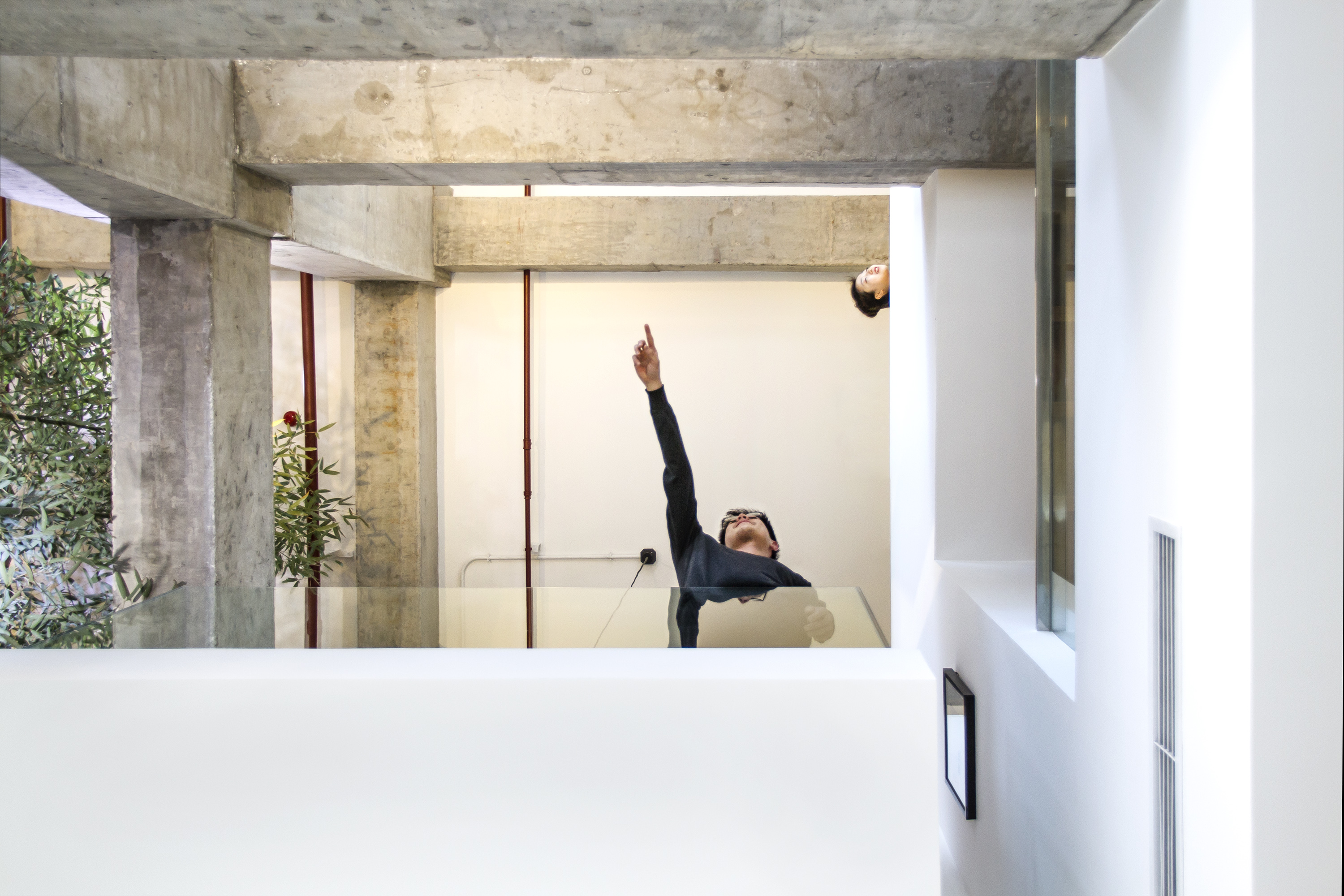
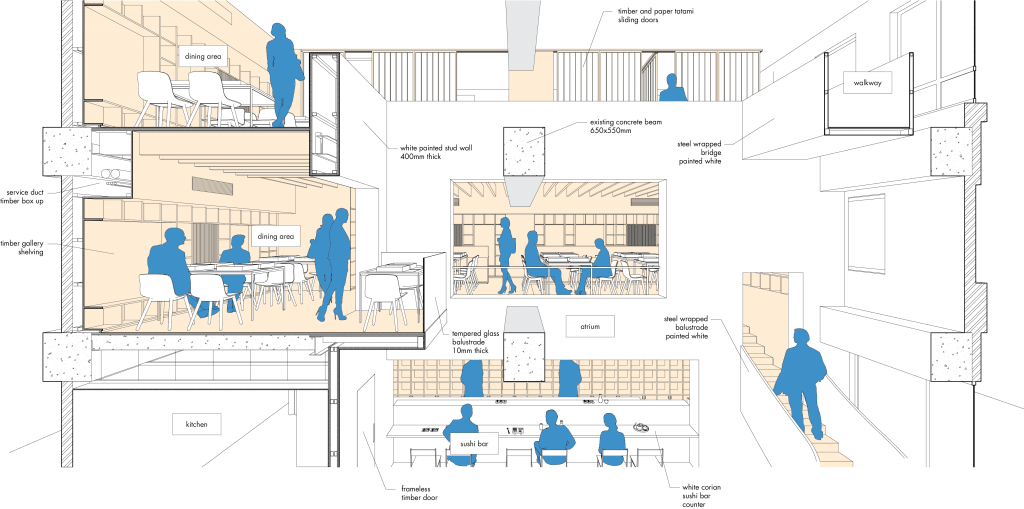
Perspective section
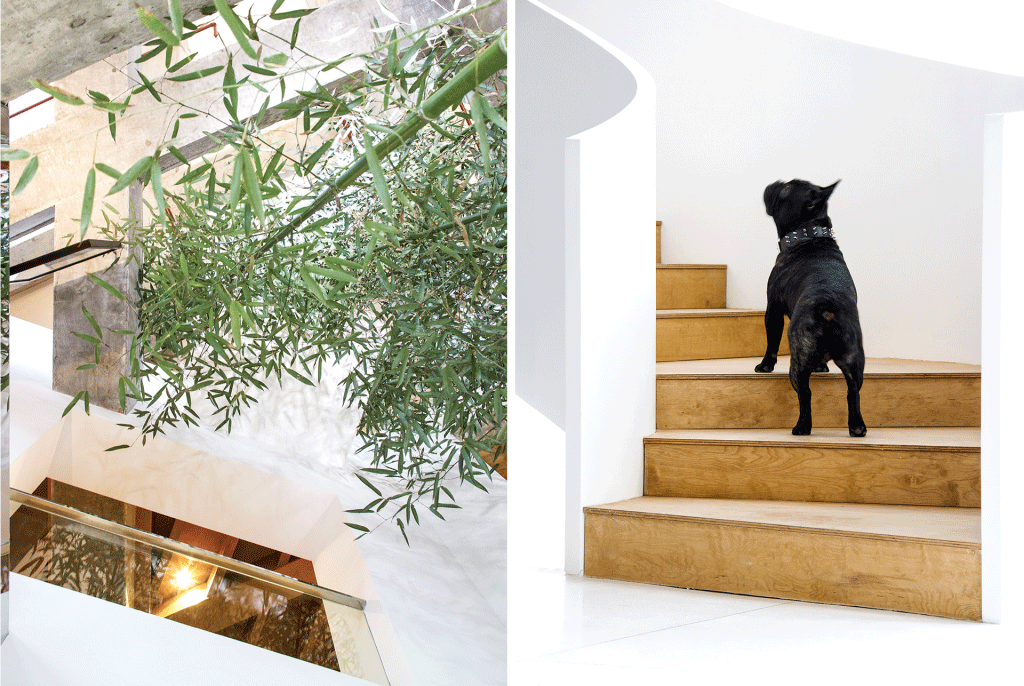
Pure elements
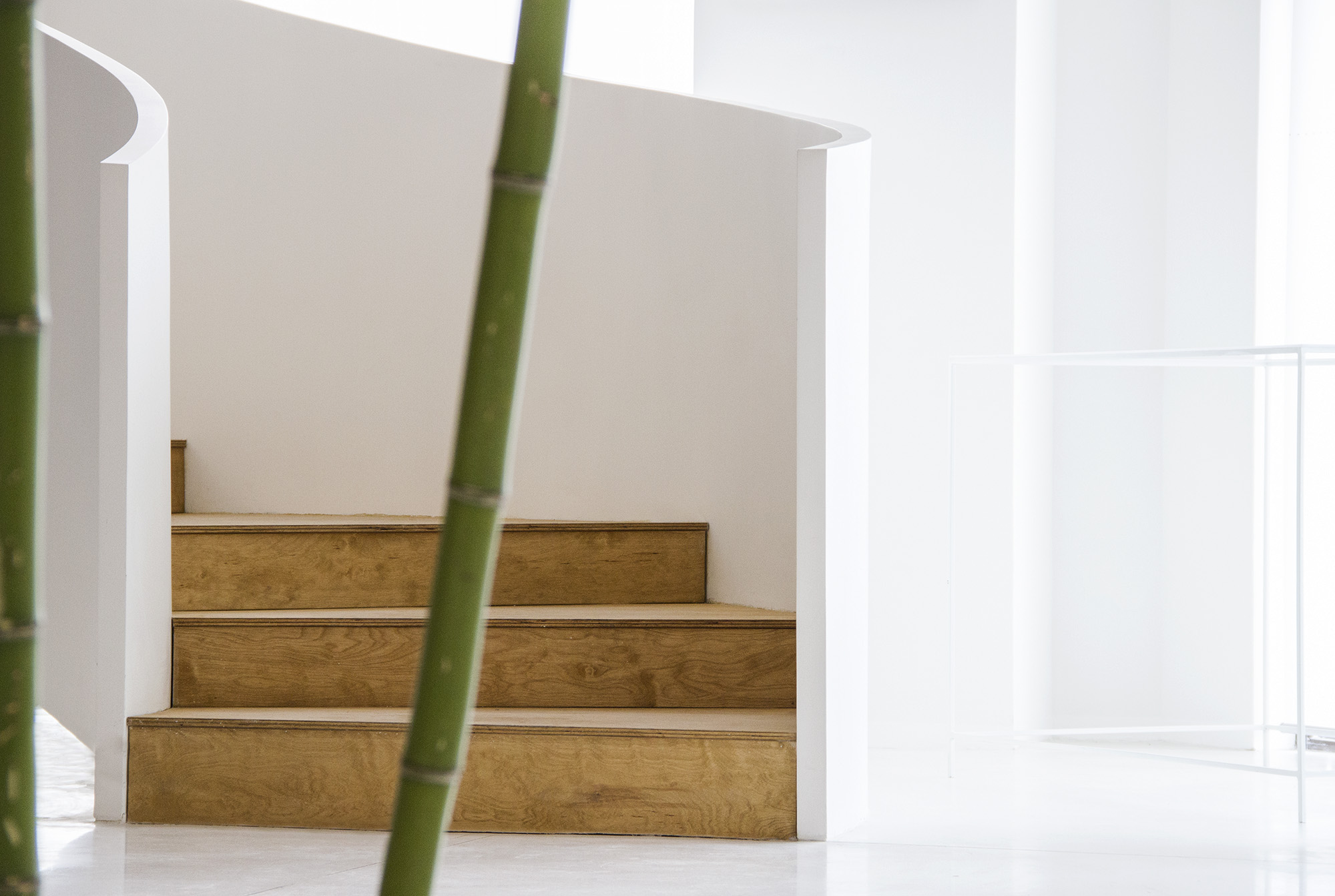
Pure Space
Using few, but strong material palette allowed us to create a pure and refined space which focused on the details and feeling within the space.
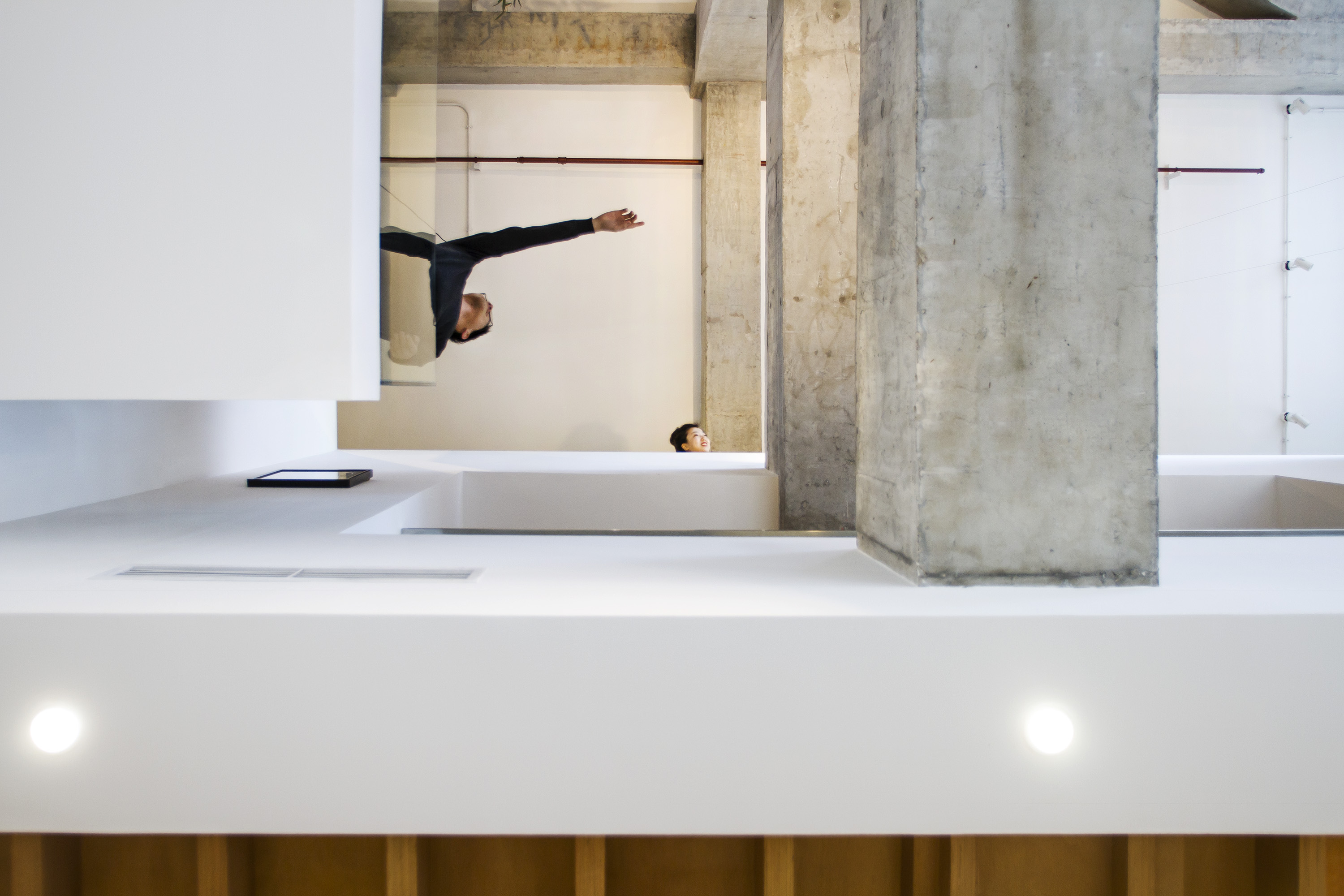
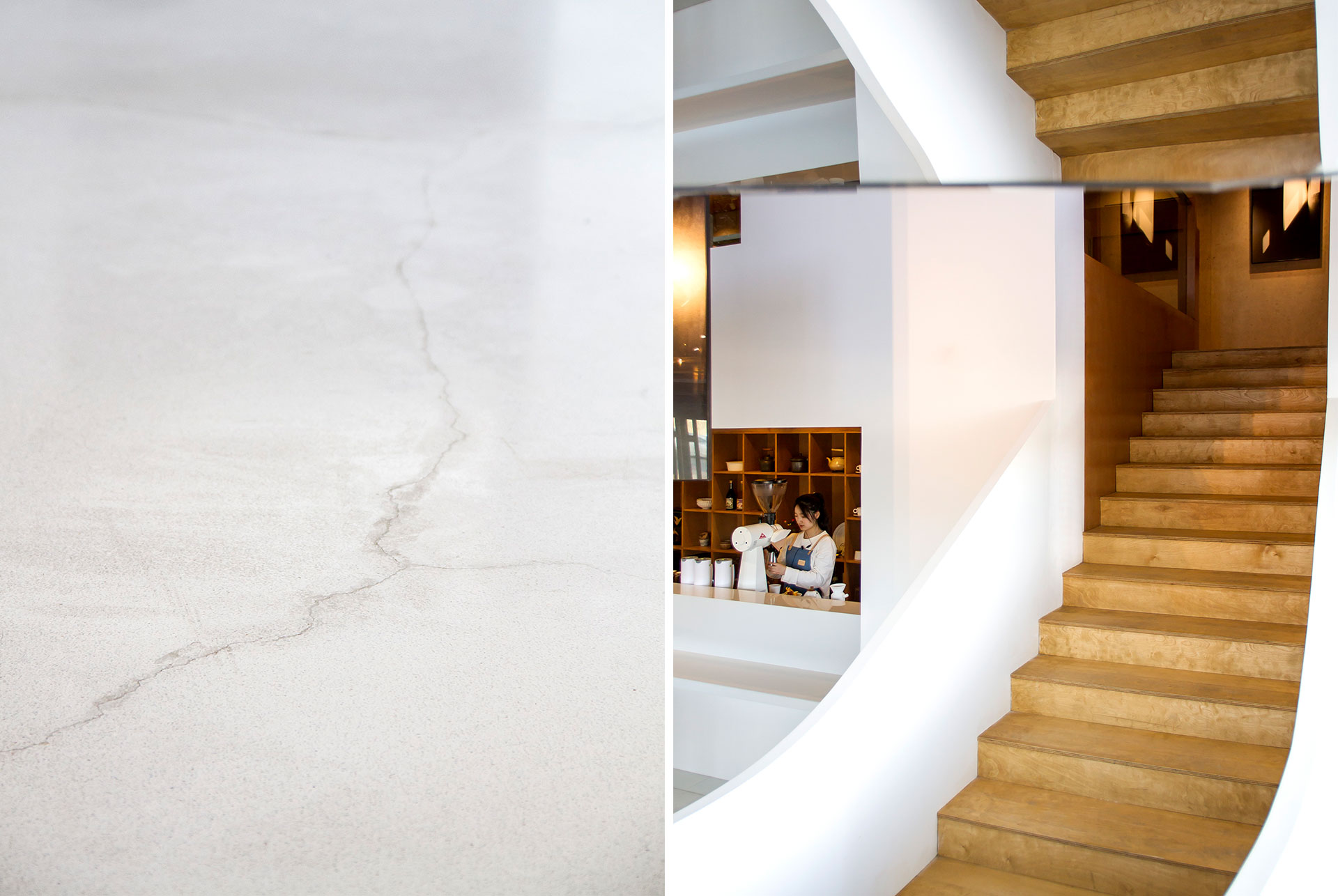
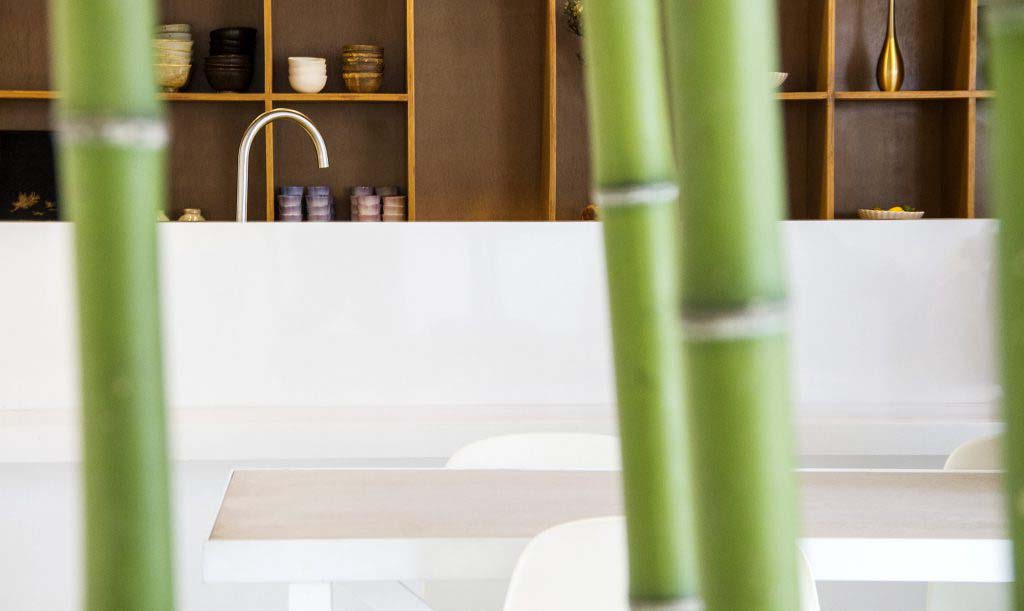
Pure elements
Framed Views
Craftsmanship
We developed a culture of working very closely with the craftsmen on site, to create the kind of finished quality that we and the clients desired.
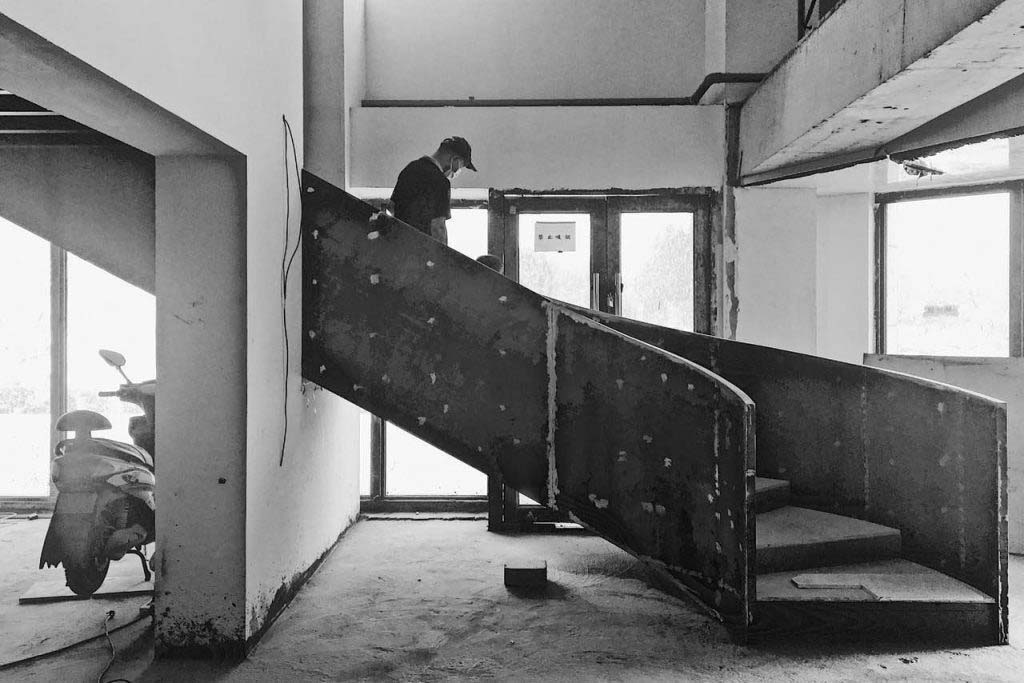
Curved stair during construction, wrapped in steel sheeting
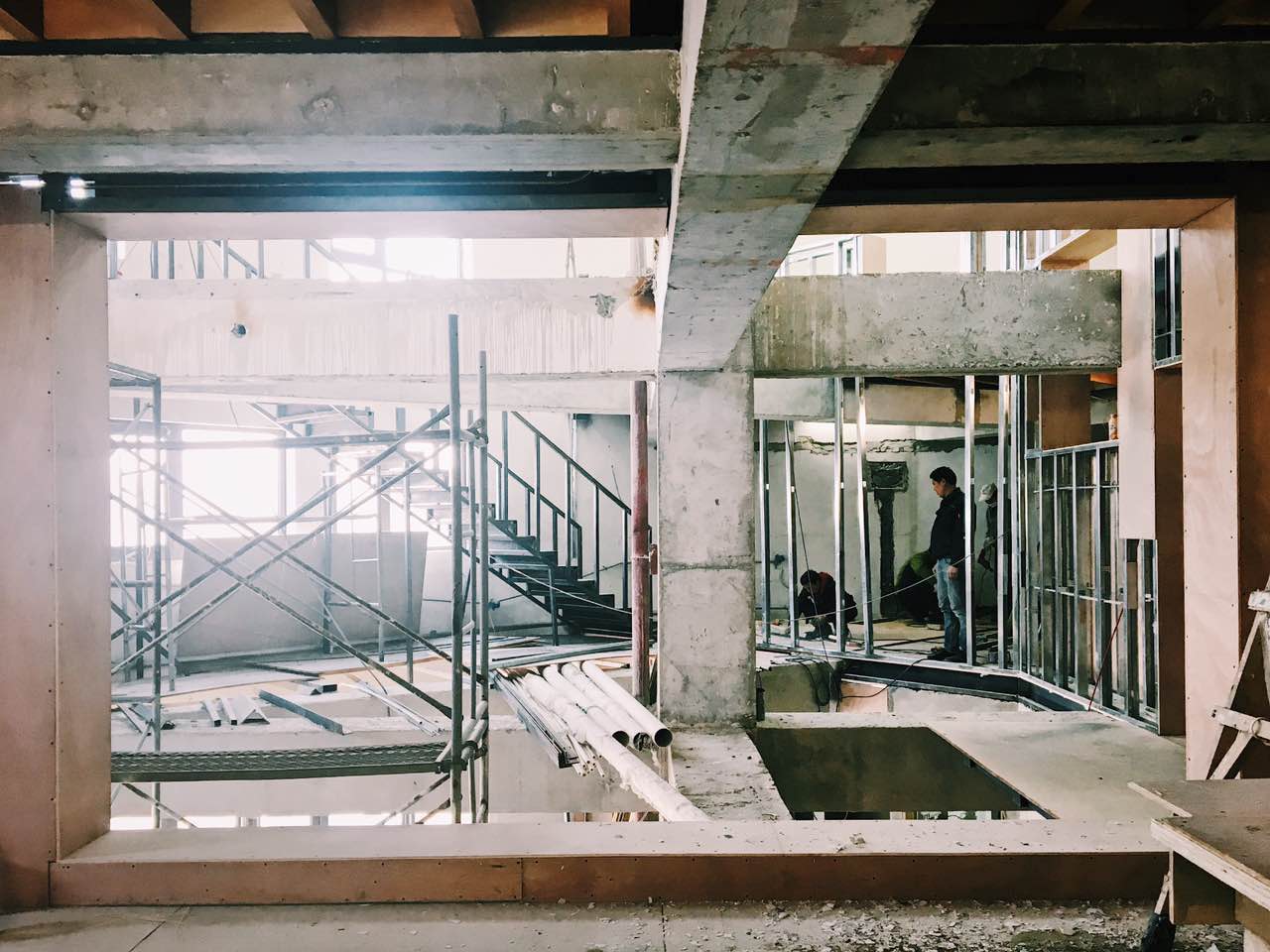
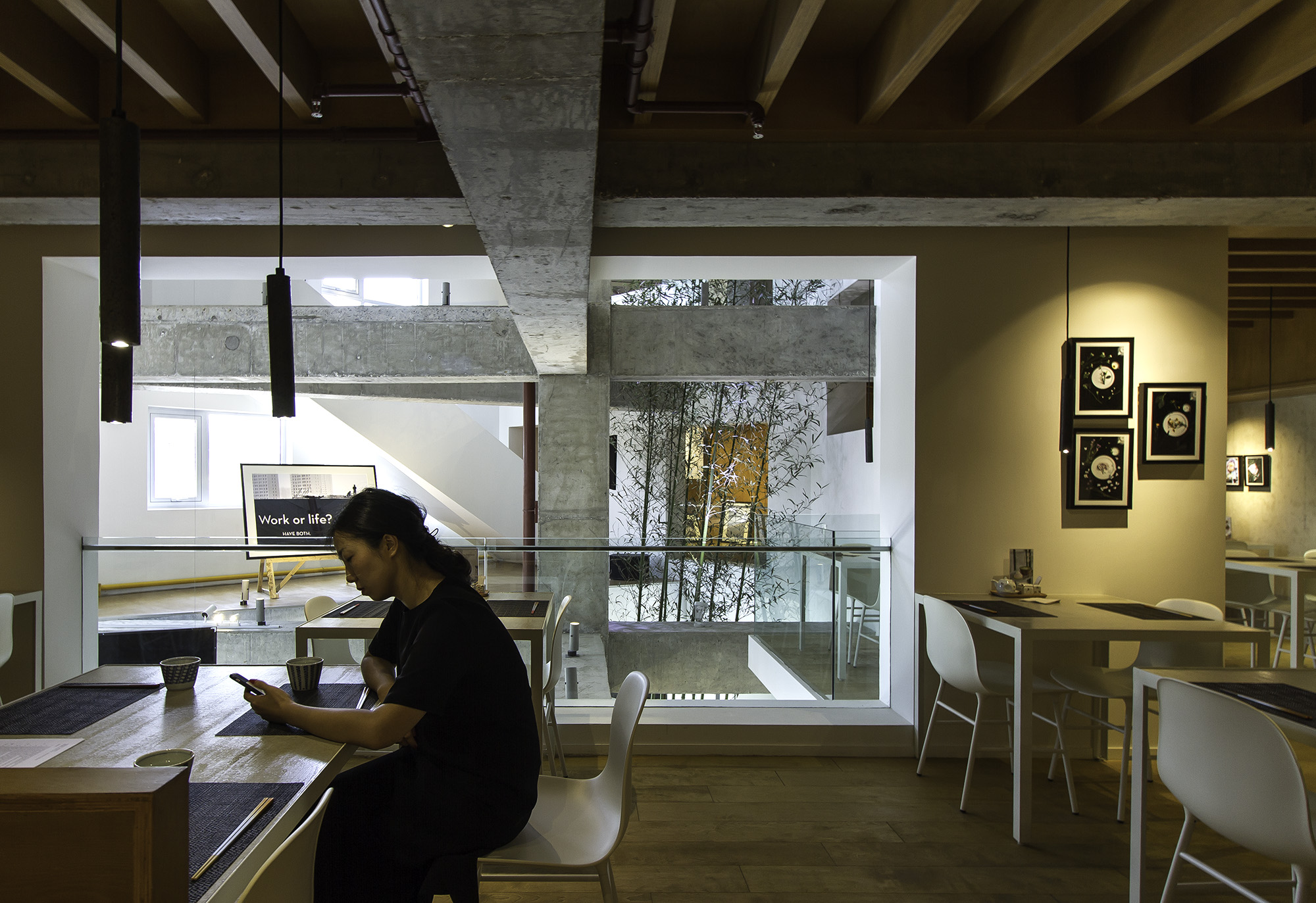
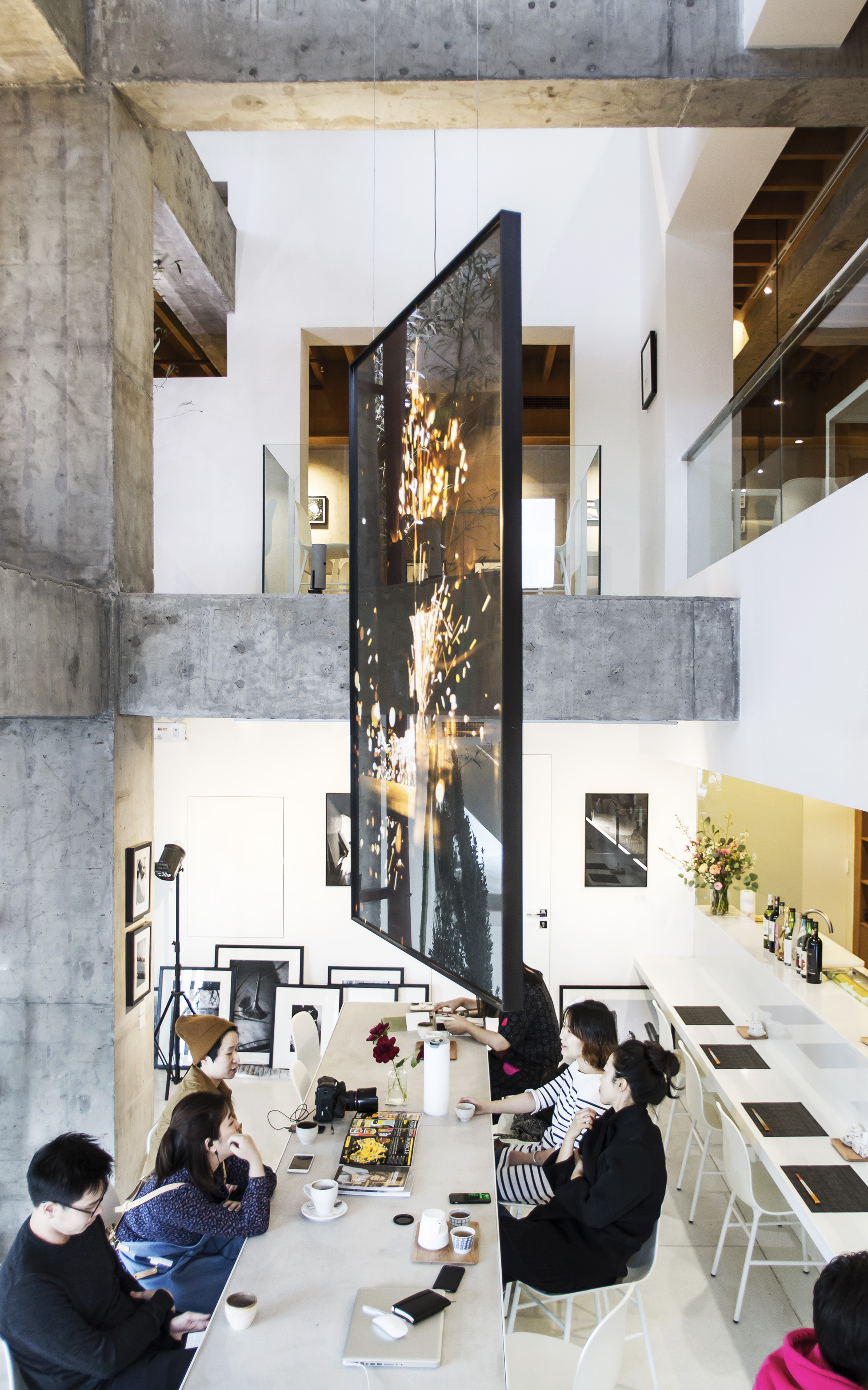
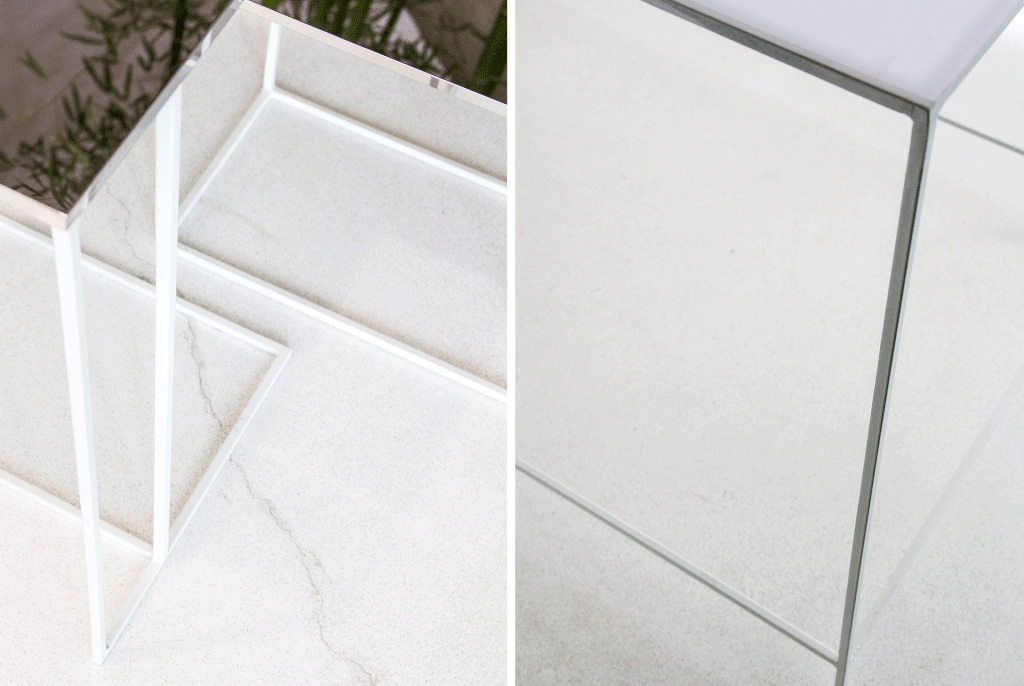
Custom designed furniture elements
Bespoke Furniture
We were intimately involved with the project conception right down to the smallest details of the restaurant. The tables of the restaurant are custom designed and built for the space.
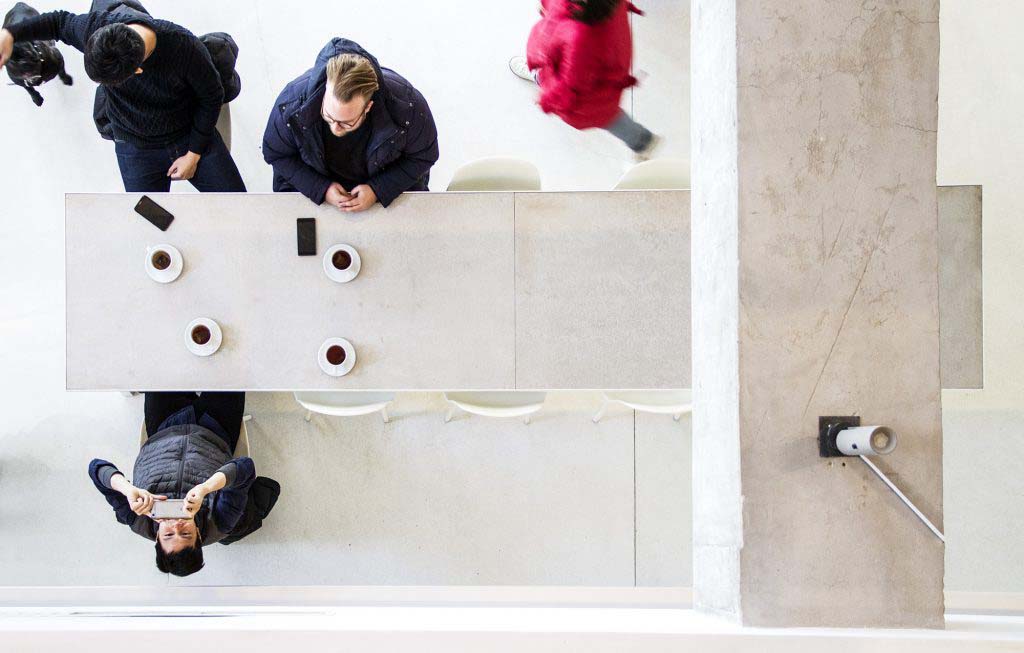
View down to the long table
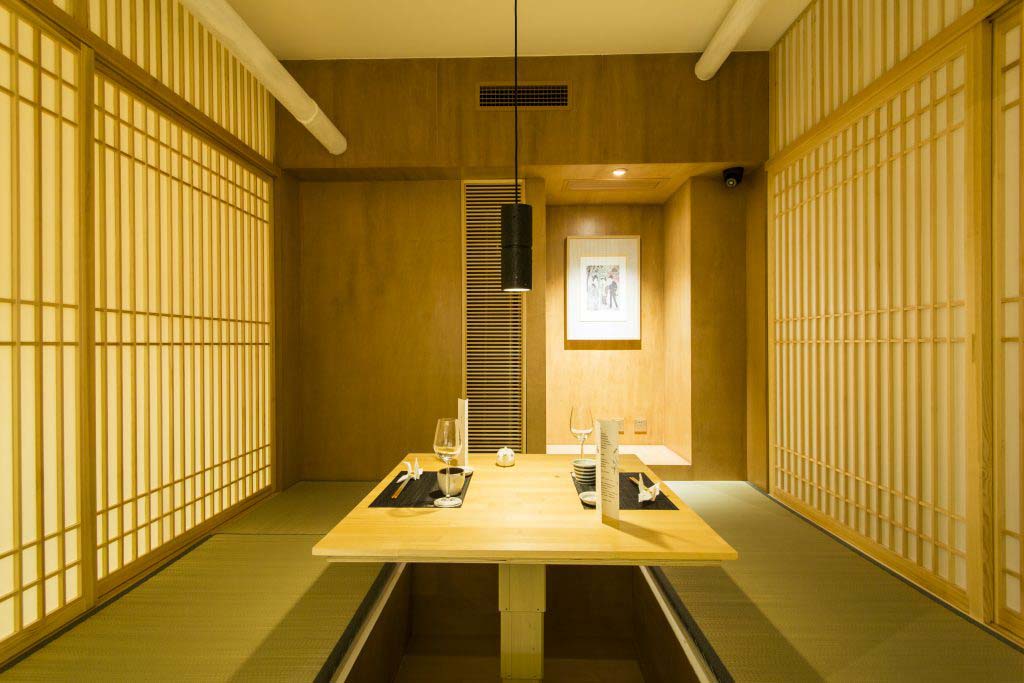
Tatami room set for dinner
Nature/Inside
We sought to use natural wood wherever possible, and bring greenery inside the atrium to create a sense of balance between the existing and new.
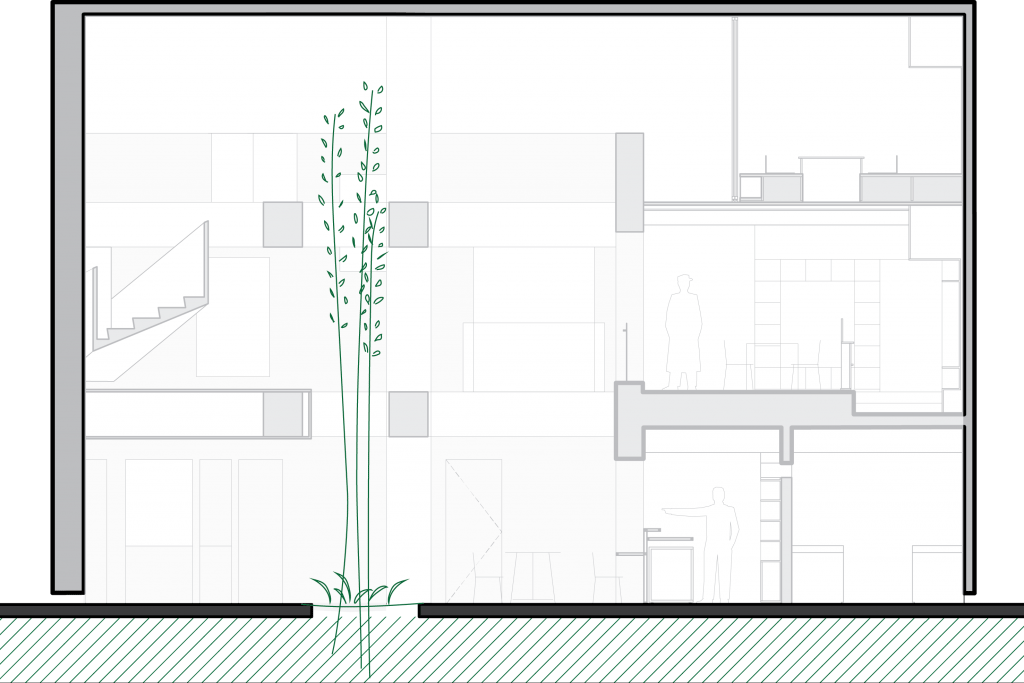
Atrium diagram
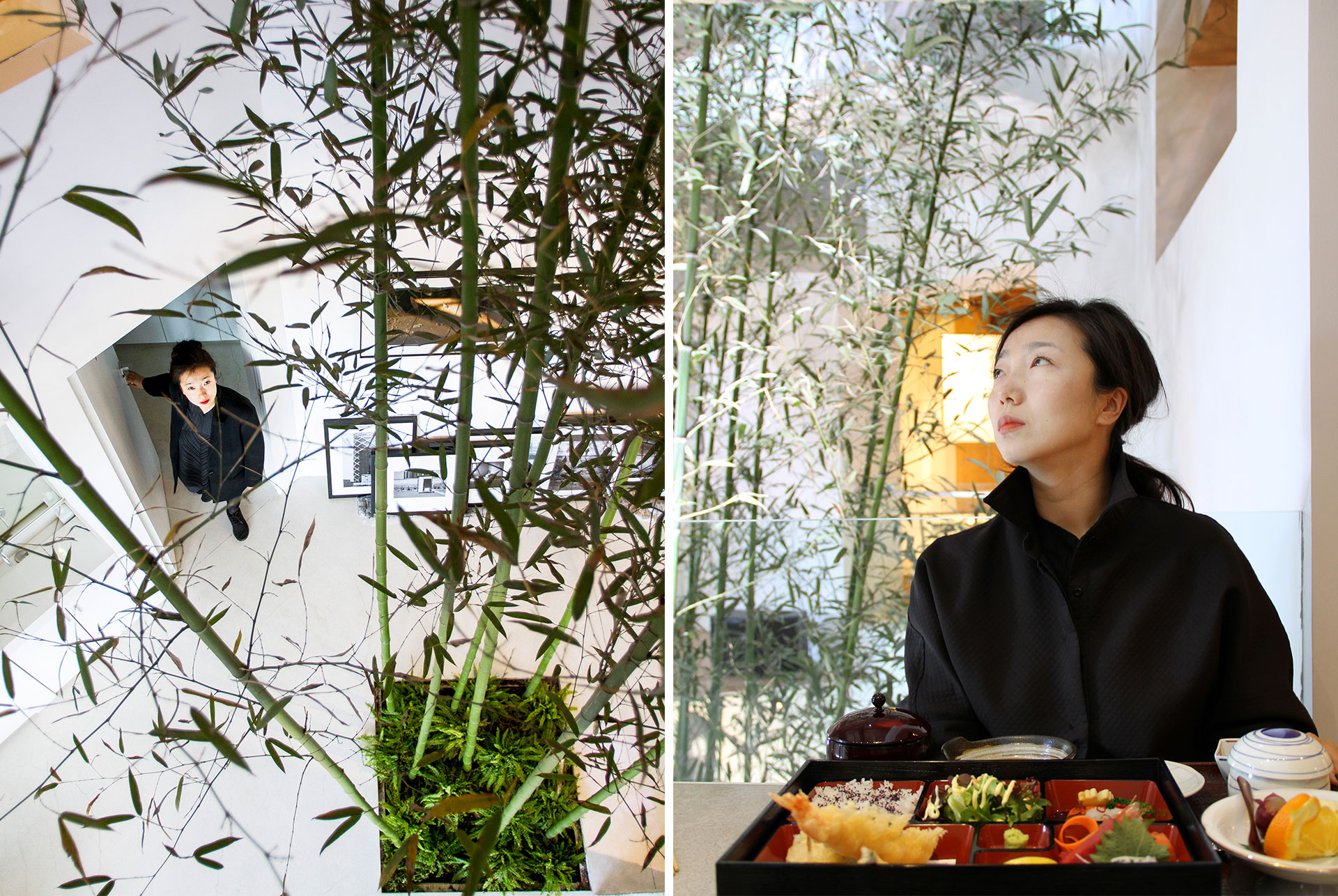
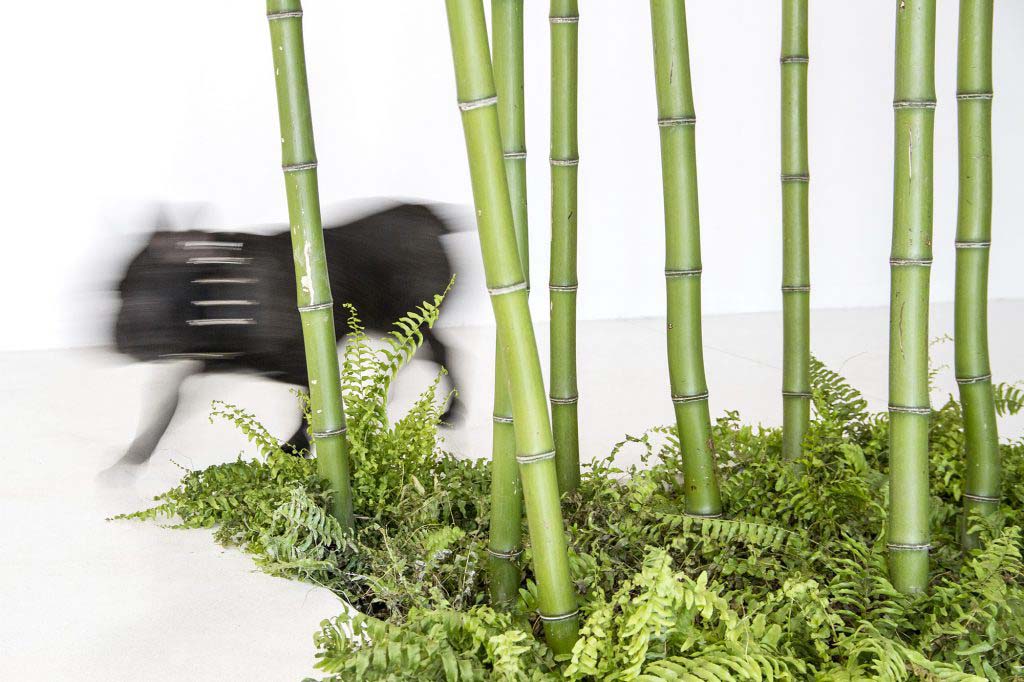
Bamboo and fern planting

Bamboo planting
Framing Views and Space
Instead of the restaurant being a series of stacked floors, the restaurant becomes a series of interlinking spaces whereby we modulate and vary the function and privacy of each space.

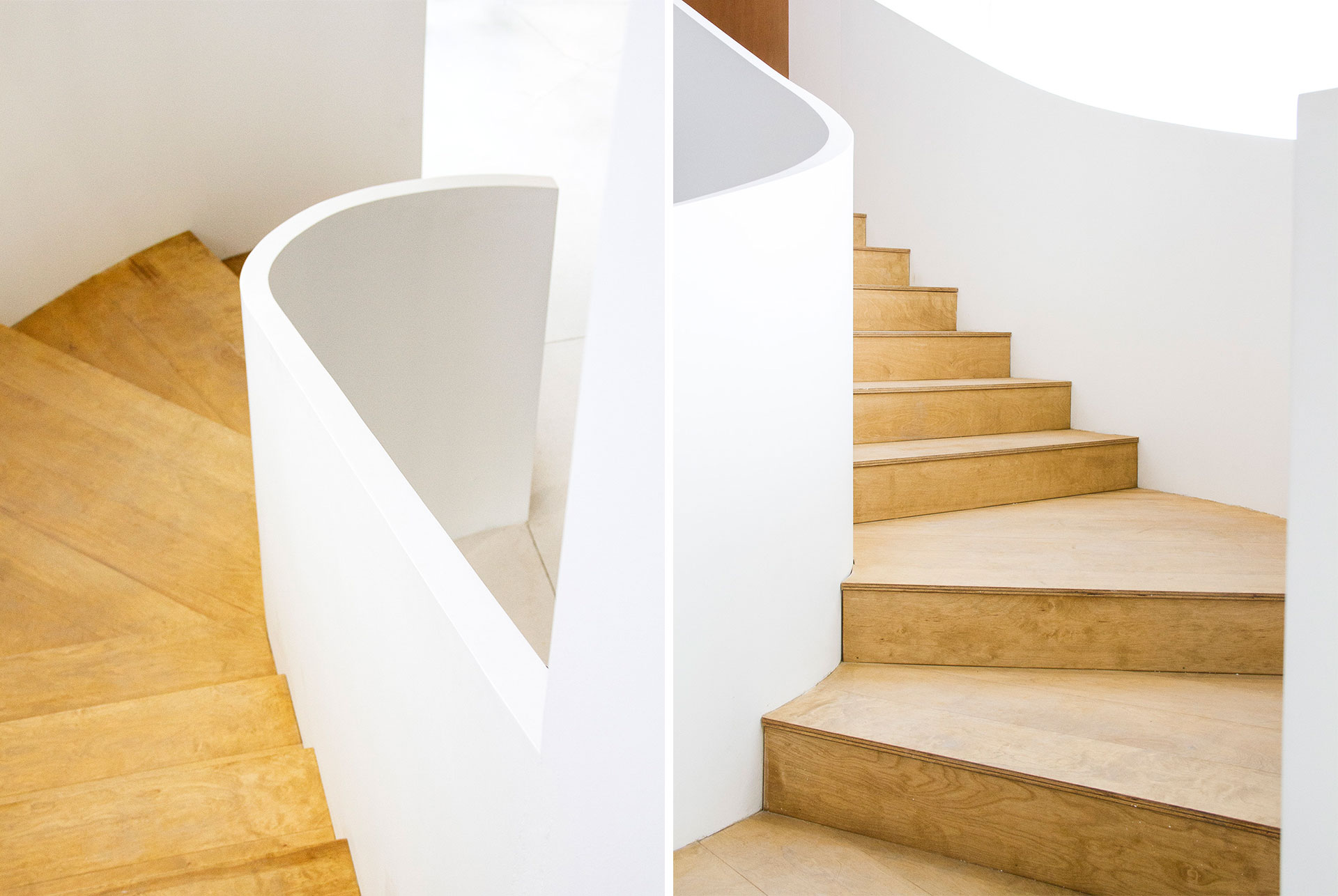
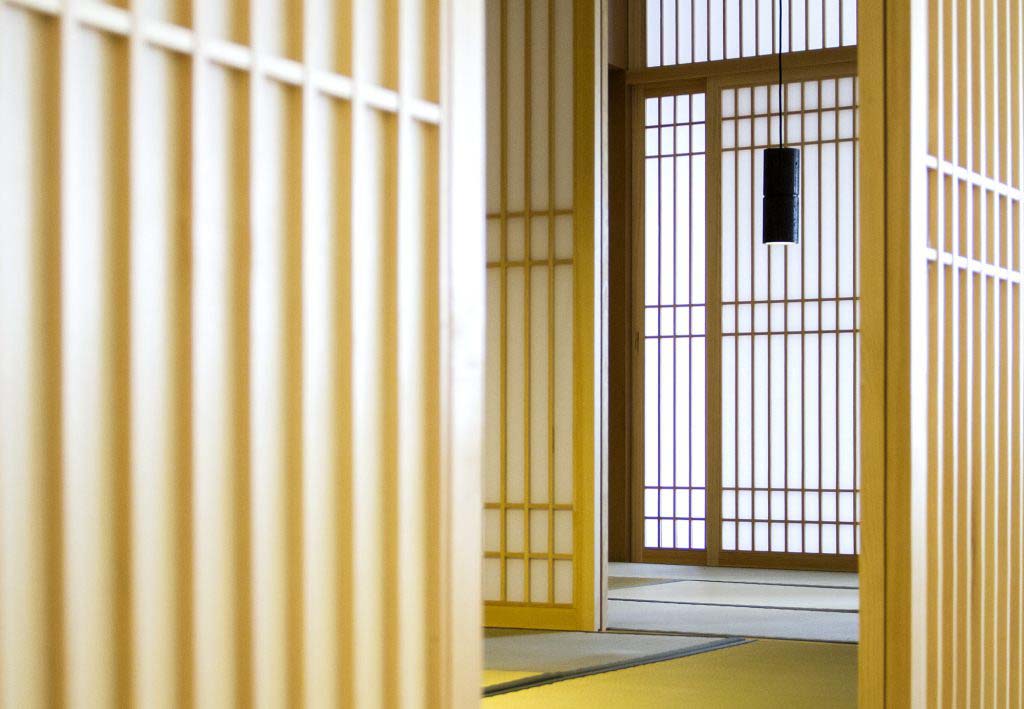
Tatami room and screens
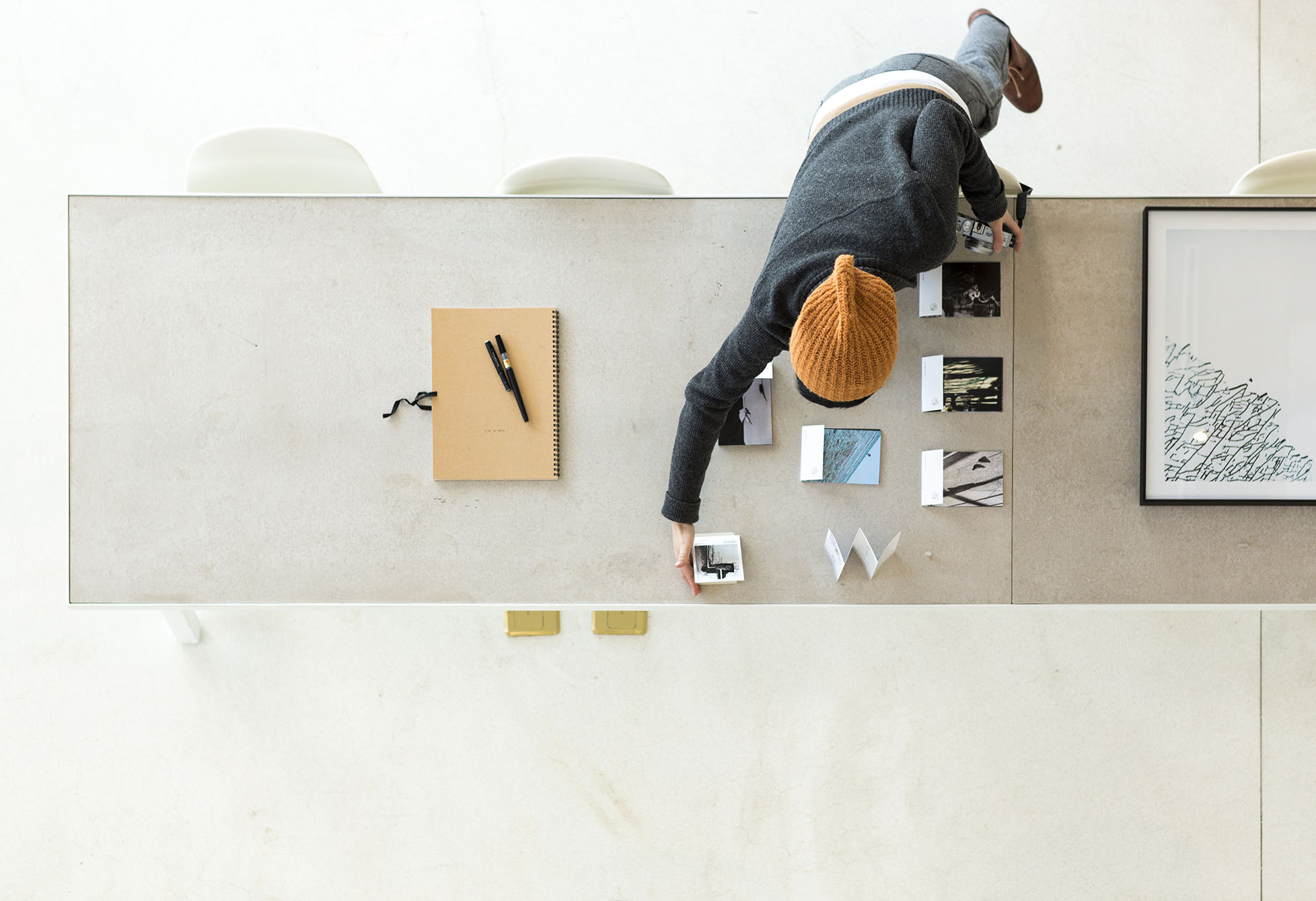
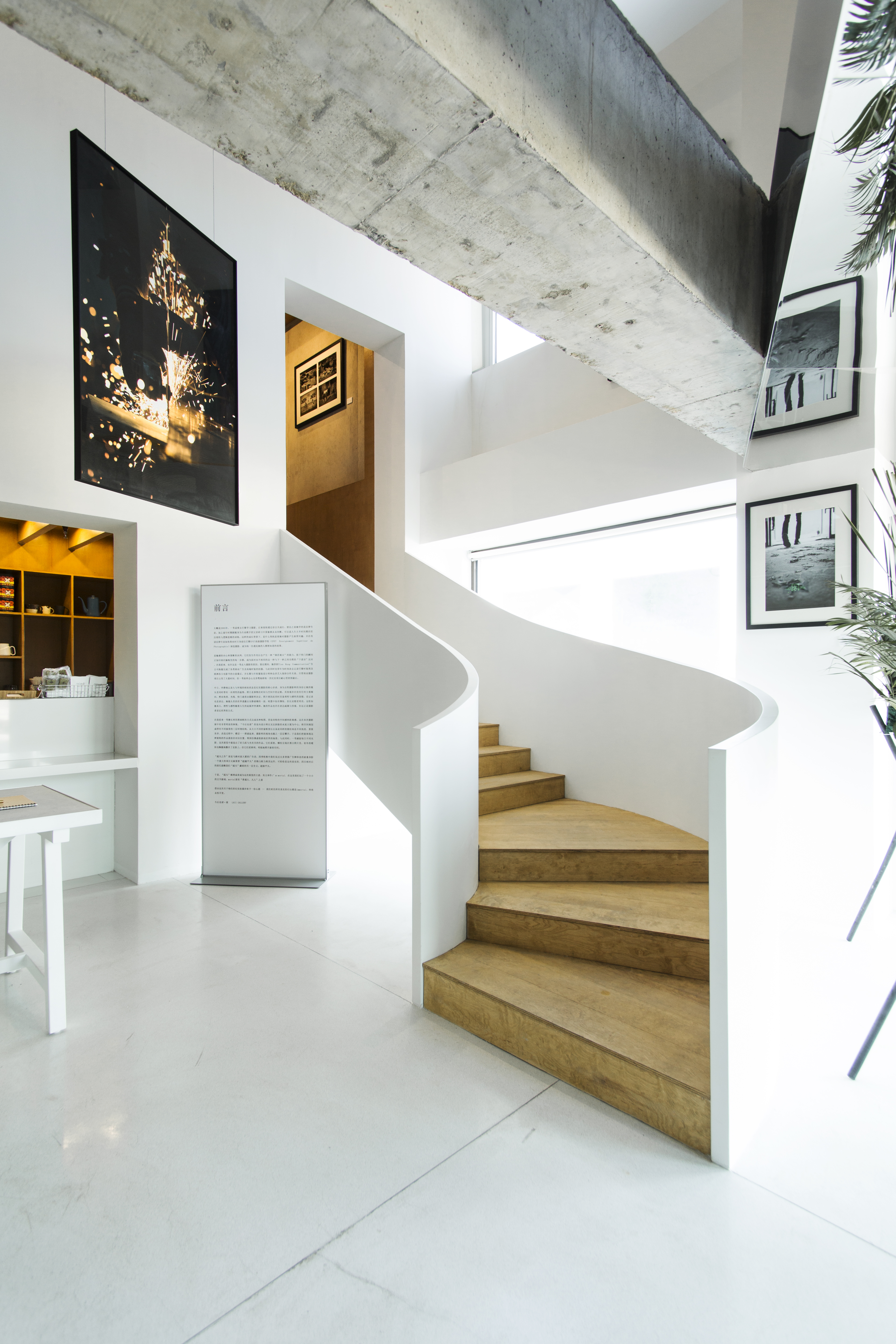
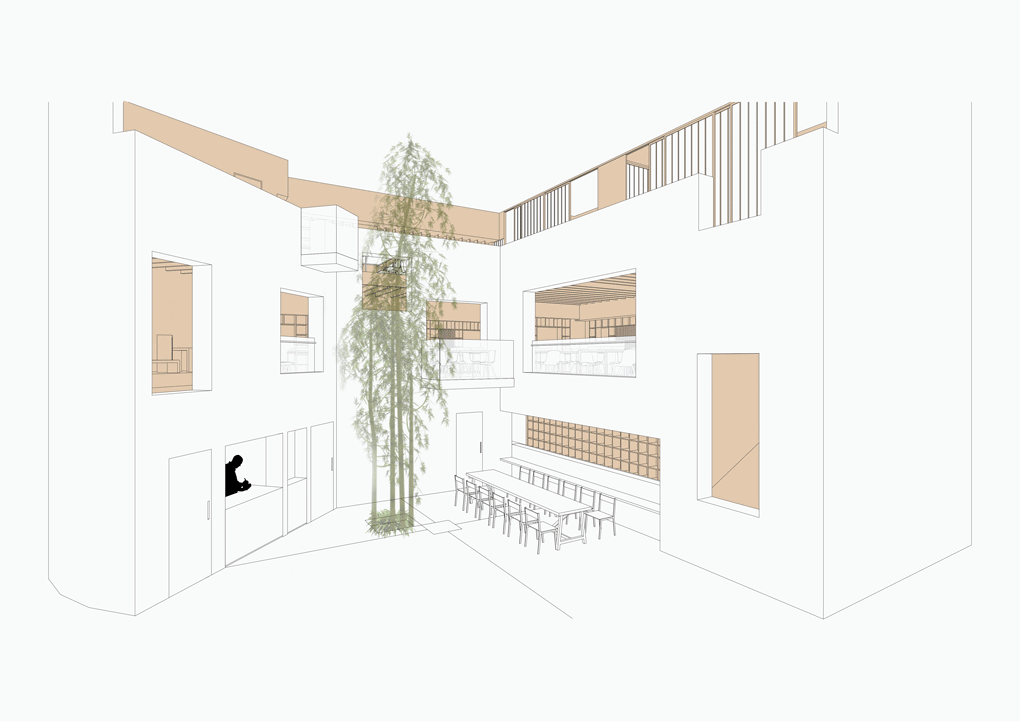
Team: Martijn de Geus, Zidi Han, Simon Henstra, Sofie Krog Buskov, Lingyun Peng, Marie Selvig, Victor Tee, Han Zhang
Project Year: 2017
Location: Beijing, China
